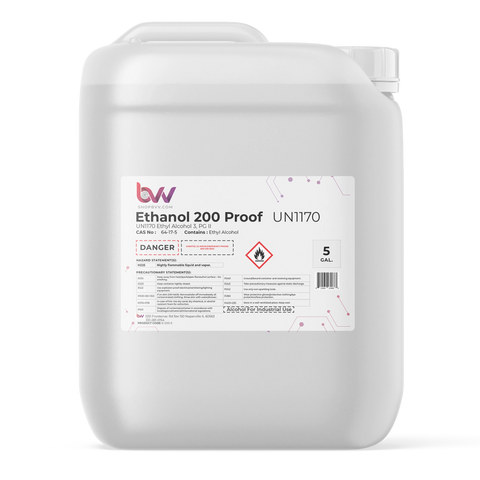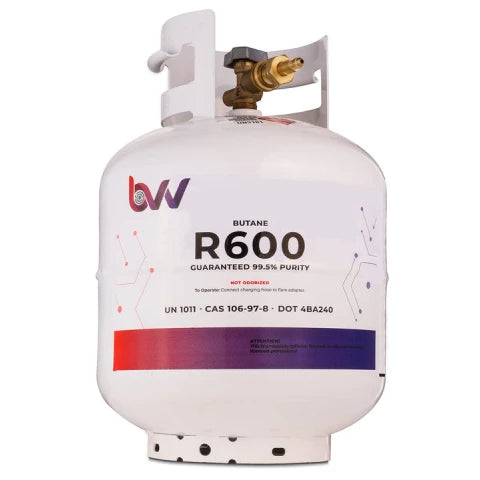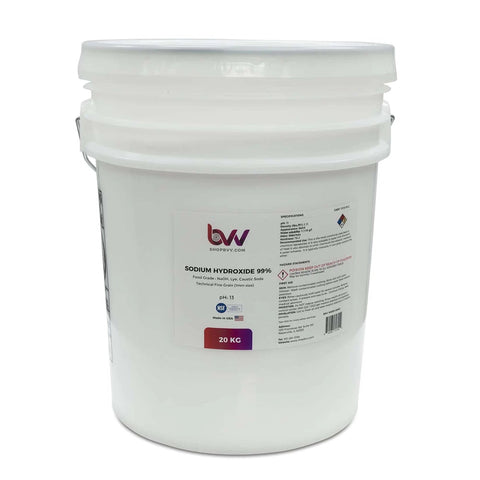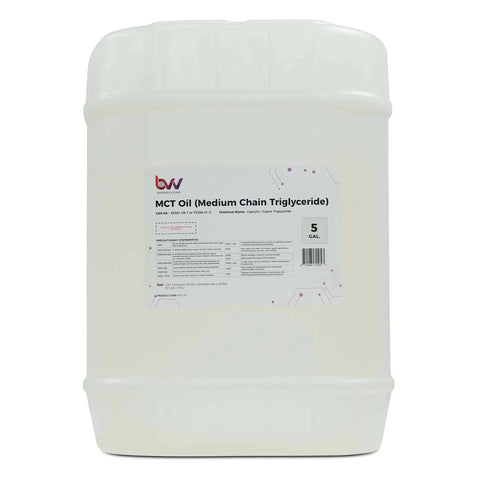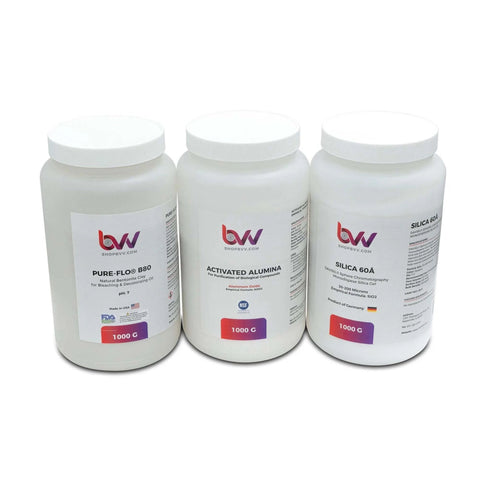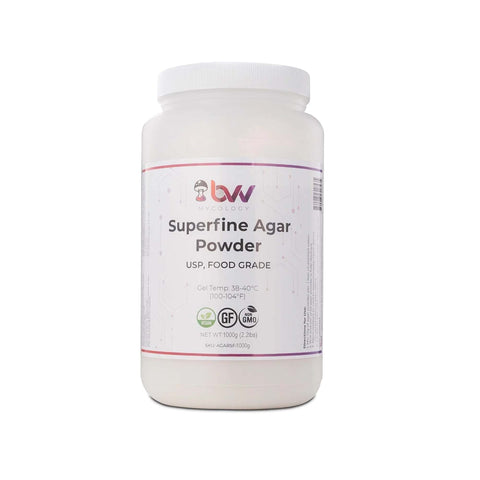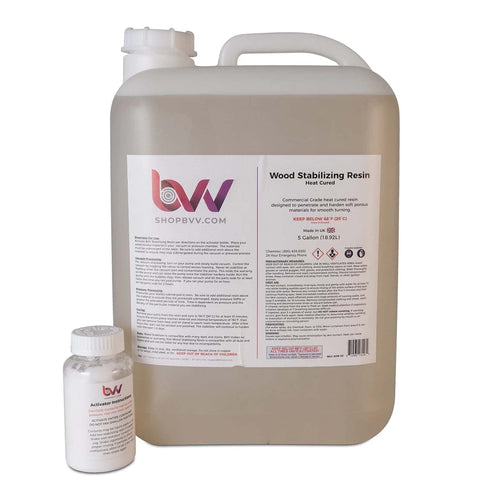Shop Consumables
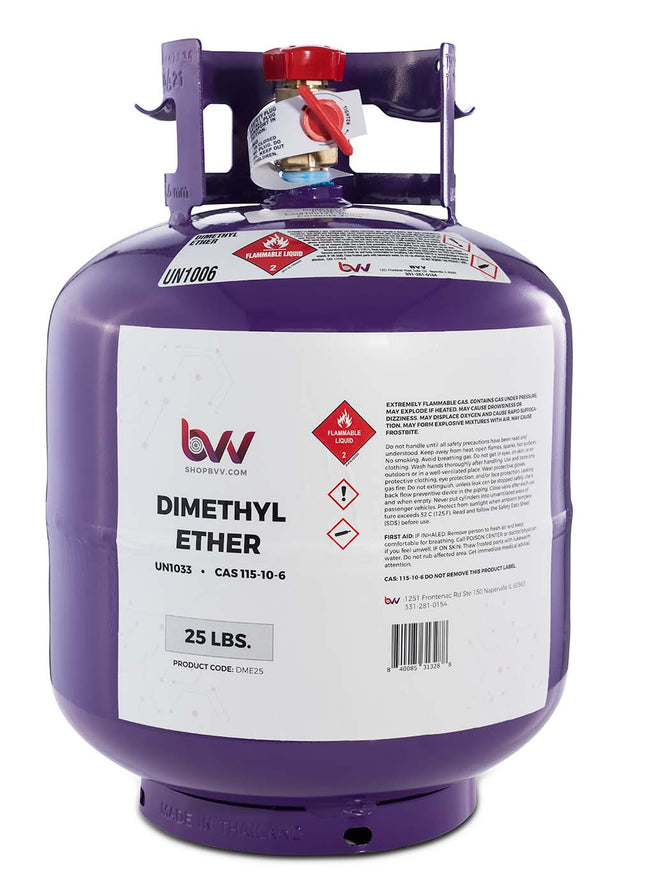
25LB High Purity USA Dimethyl Ether - 99.5% Guaranteed
25LB High Purity USA Dimethyl Ether - 99.5% Guaranteed for Extraction Eco-Friendly Liquefied Dimethyl Ether (LDE) extraction process for the extraction of botanical oils without compromising the authentic and genuine aromatic and therapeutic natural properties. LDE extraction process is amphiphilic by design where dimethyl ether has a polar head and two non-polar tails making it soluble in both hydrophilic (water-loving, polar) and lipophilic (fat-loving, non-polar). Dimethyl ether is perfectly suited to penetrate the waxy non-polar surface layer of the trichome and extract 100% of the non-polar terpenes and other essential botanical oils from the water inside. The thermodynamic driving force is the release of energy in the form of entropy (randomness). Alternatively, n-butane is completely non-polar solvent and the trichome’s cellular water exhibits strong repulsion forces making it nearly impossible to achieve such superior results. DME Safety Data Sheet DME Spec Sheet Key Features: Zero Heavy Metals Zero Residuals Full Spectrum Extraction True Plant Terpenes & Flavanoids Extracted and Preserved 5 Hour Start to Finish Process / @ 26°C/85°F (During Purge) Wide Range of uses: Fruits - Botanicals Shop our entire Solvents and Gas Collection on BVV DISCLAIMER(S): This tank comes with a specialized valve for use with DME. Do not use a standard LP tank with a standard valve. This unit is intended for LEGAL purposes only, to be used in accordance with local laws and ordinances. Use only in WELL VENTILATED AREAS! Notice: This item will ship via Ground ONLY. Quantities bought in 3 or more will ship via freight unboxed BVV™ always recommends distillation of every solvent before use. BVV DME is biodegradable. When used properly, it is safe for the environment and harmless to humans, animals and plants. BVV DME is flammable and must be used with caution. It has a higher flash point than n-butane and evaporates completely at -24C. It has no heavy metals in it. Tank contains no dip tube. Tank does not include CGA 510 fitting. Must be added through dropdown or bought separately. DME is NOT compatible with Borosilicate sight glasses & Silicone, Viton, or Buna-N gaskets Recommended Gaskets: Tef-Flex, Tef-Steel or PTFE gaskets should be used. *Actual liquid weight is 25LB The solvent comes in a DOT transpiration approved tank. *Free of any hydrogen Sulphide based Ethyl Mercaptan Odorants. *This product is clean, colorless, and odorless. *Tank contains no dip tube. *Actual DME liquid weight is 25LB Due to FAA regulations, solvent tanks cannot be safely transported via means other than ground. Any order that has solvent will not be shipped in an expedited fashion. If an order with solvent is combined with any other items and chosen to be expedited, that entire order will ship via Ground/Freight. We will not split up any orders and ship them separately. If a customer is wanting to expedite specific items and order solvent, 2 separate orders (1 for the solvent and 1 for the expedited items) will need to be placed in order to do so. Solvents do not ship to Hawaii, Puerto Rico, or any other US Territory outside of the contiguous 48 States. Shipping Solvent to Alaska may ONLY ship via freight and will be required to travel through Canada. We have this policy in place to ensure safety when transporting solvents, and to prevent any issue with shipping times for our customers.
$225.00 - $235.00
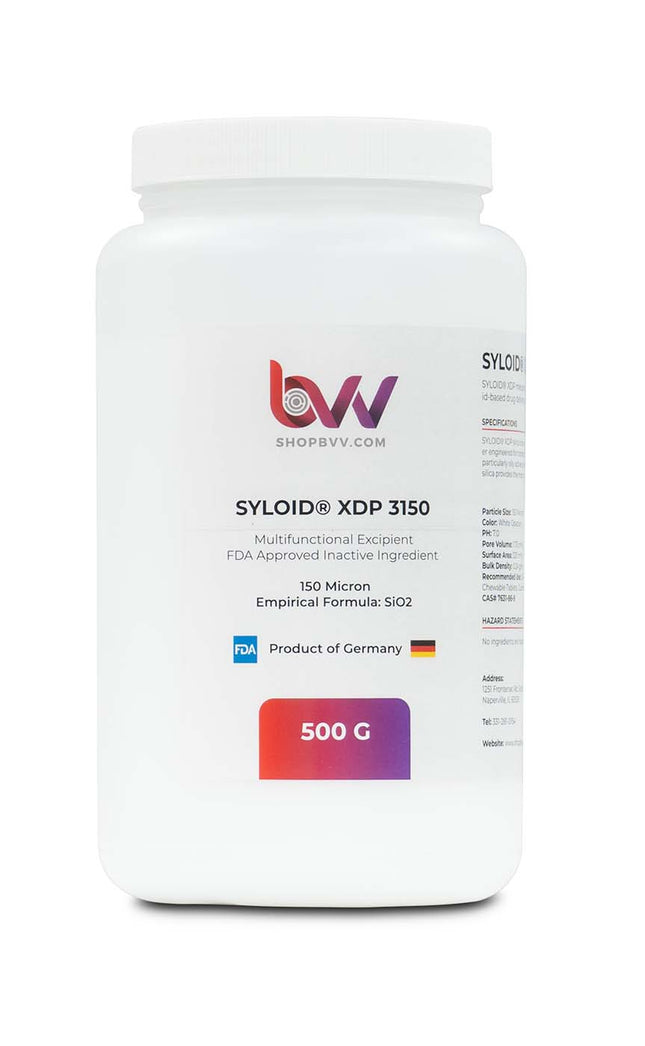
Syloid® XDP 3150 Silica : Turn Distillate to Powder (FDA Approved Ingredient)
Syloid® XDP 3150 Silica Solid Carrier for lipid- based drug delivery systems Convert your Distillate to a Powdered Ingredient! SYLOID® XDP is engineered for transforming liquids to free-flowing solids particularly oily actives and lipid-based systems. SYLOID XDP silica provides the most complete release of loaded oils. We use this Patented silica for a variety of infusions, and to build repeatable recipes. Simply mix by hand slowly or with a machine mixer 1:1 (distillate to SYLOID). SYLOID® XDP give you the ability to create large powdered ingredient batches that can be used later. The best part is that your ratio of distillate equals the SYLOID. This makes batching and recipes easy to replicate and you don't have to be an expert at infusing. Recommended Use: Capsules, Chewable Tables, Gummy Products, Chocolates, Drinks BVV Recommends Ratio of 1:1 Volume (Distillate to SYLOID) Oil-Liquisolid Formulations Maximum daily intake: 5.4 grams/day The daily intake calculations are for adults of average 132 lbs. Benefits: FDA Approved Inactive Ingredient Stays in Suspension for edibles, delivering an equal dose into each serving! Optimum Bioavailability Complete release of your Active Ingredients! Pharmaceutical product for Infusion products Mixing by hand for small batches, or kitchen planetary mixer SLOWLY Water Based Drink Notes Does not stay suspended evenly in drinks, shaking before drinking required. Distillate can Release in hot drinks above 170F. (this does not apply to edible recipes) SYLOID® XDP Technical Data Sheet SYLOID® XDP Standard Operating Procedures - Liquid Loading Syloid® XDP is a high purity silica gel that consists of over 99% SiO2, and it meets ICH guidelines on elemental impurities, the test requirements of U.S. Pharmacopoeia-National Formulary for Silicon Dioxide and European Pharmacopoeia for Silica, Colloidal Hydrated. This product is labeled CAS # 7631-86-9 amorphous silica gel or silicon dioxide. An approved FDA Database inactive Ingredient, approved for drug products.
$107.18 - $3,135.66
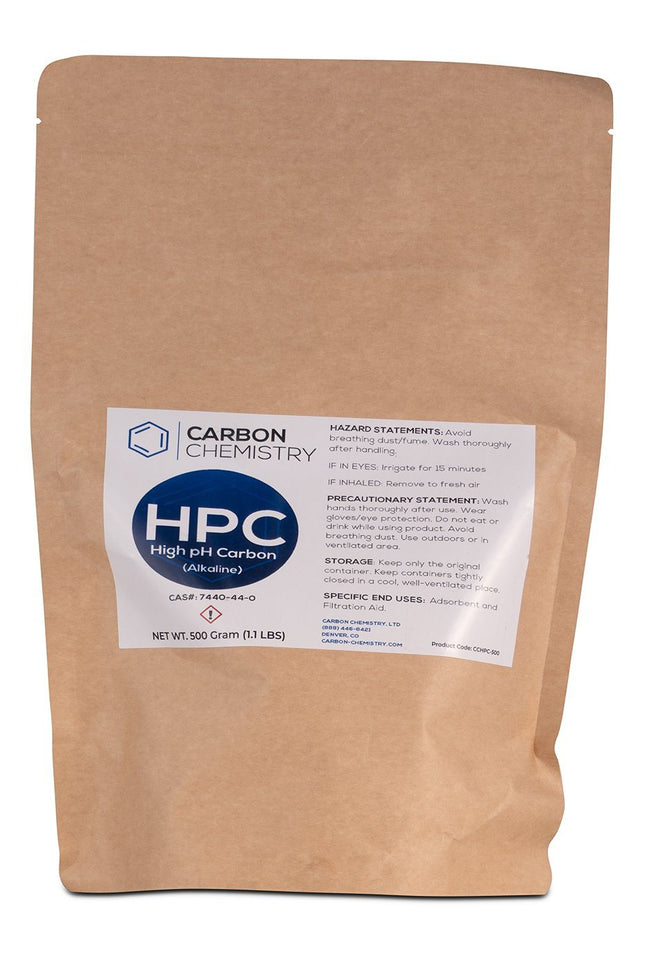
Carbon Chemistry High pH Carbon
Carbon Chemistry High pH Carbon Carbon Chemistry High pH Carbon powder is some of the highest purity and quality High pH Carbon on the market. High pH Carbon is an alkaline filtration media is most commonly used at the end of a scrub to balance out the pH and can add more remediation support in a solution. Carbon Chemistry High pH Carbon - SDS
$9.99 - $24.99
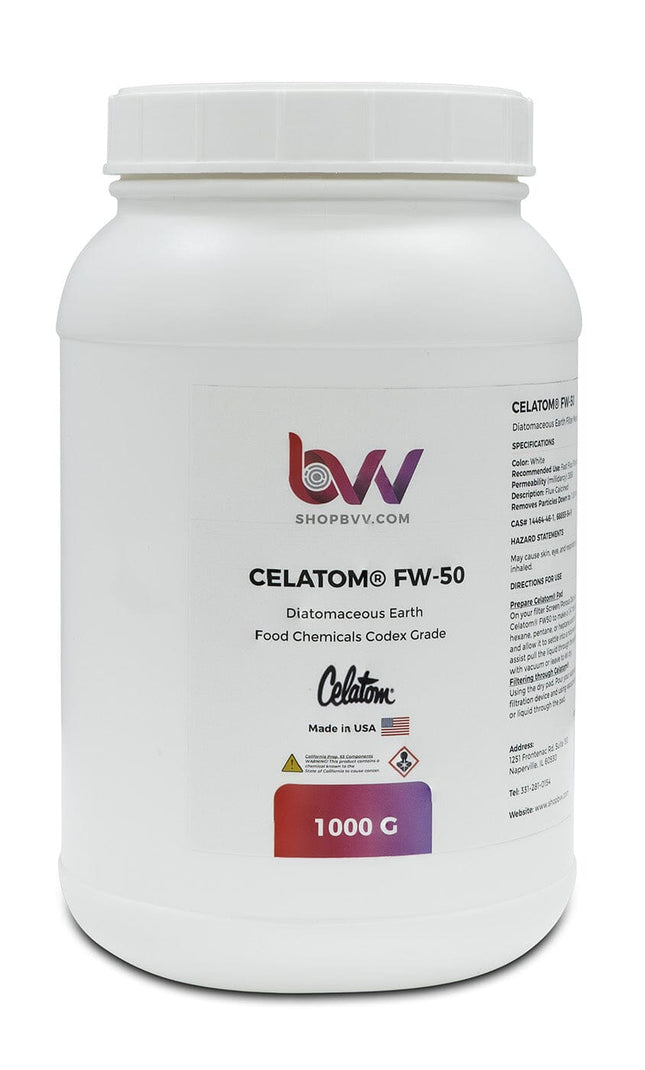
Celatom FW-50 Diatomaceous Earth 1.85 micron (Compares to Celite 545)
Celatom® FW-50 Food Codex Grade, Compare to Celite® 545 Filters particles down to 1.85 micron This filter aid is a white flux calcined diatomaceous earth. It has a fast speed filtration rating. Its applications At BVV we like to use Celatom FW-50 for CBD de-fat filtration in any of our Refinement Filters. Above our paper filter, we build a 1/4"-1/2" bed of media that we use to clarify and separate winterized waxes out of our ethanol from the winterization process. We prefer this over just the filter paper because it results in less clogging and more run time. Some other applications are wort beer, antibiotics, casein, pressed juices, lacquers, polymers, syrups, sorghum, varnish, water, corn gluten, citric juices, chemicals, resins, enzymes, enamels, kelp, plastics, shellacs, and corn syrup to name a few. Celatom FW-50 Technical Data Sheet Celatom FW-50 Food Grade Information Celatom FW-50 Safety Data Sheet
$17.00 - $129.00
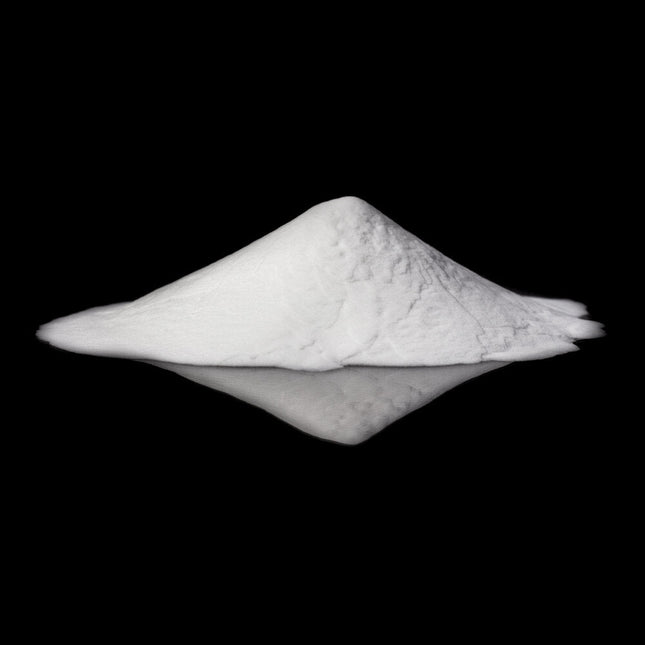
CHEMTEK Silica 60
Silica 60 is used as an adsorbent to remove gums and phosphatides and to separate fractions in chromatography. Silica 60 SDS
$30.00 - $215.00
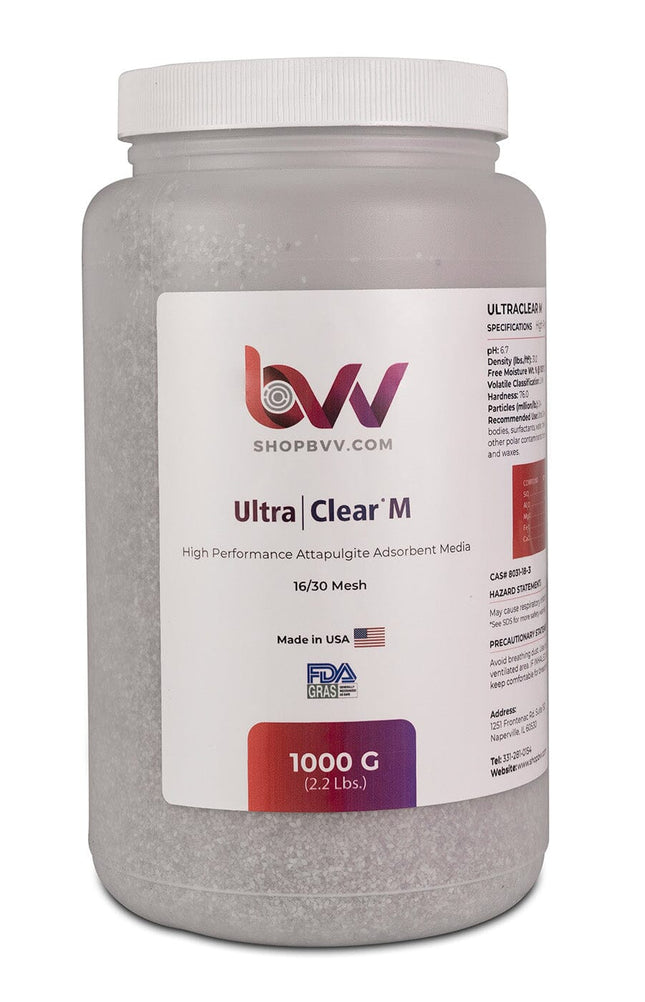
Ultra Clear M - Granular High Performance Bentonite for Bleaching & Decolorizing Edible Oils
Ultra:Clear® M 16/30 Mesh Made in USA, Food Grade Certified Ultra-Clear® M effectively removes color bodies, surfactants, water, free fatty acids, organic oxides, and other polar contaminants from a wide range of oils, liquids, and waxes. It is the Second Largest particle size in the Ultra-Clear product line. UltraClear® M is a unique, naturally occurring attapulgite that has been thermally processed to provide hard, durable granules that won’t swell or breakdown in the presence of water. All Ultra-Clear products are classified as processing aids andhave Generally Recognized As Safe (GRAS) status from theFood and Drug Administration (FDA). At BVV™ we recommend 150g per lb. of biomass. We also use this media with layering techniques & can be used with BVV™ Silica Gel and BVV™ Neutral Activated Alumina for a sugar in the oven finish! Ultra-Clear® is manufactured in 4 granule sizes, 8/16, 16/30, 30/60 & 60/90 mesh sizes. See the technical data sheet for more information from the manufacturer. Ultra:Clear® M Food Grade Certificate Ultra:Clear® M Technical Data Sheet Ultra:Clear® M Safety Data Sheet
$13.00 - $2,100.00
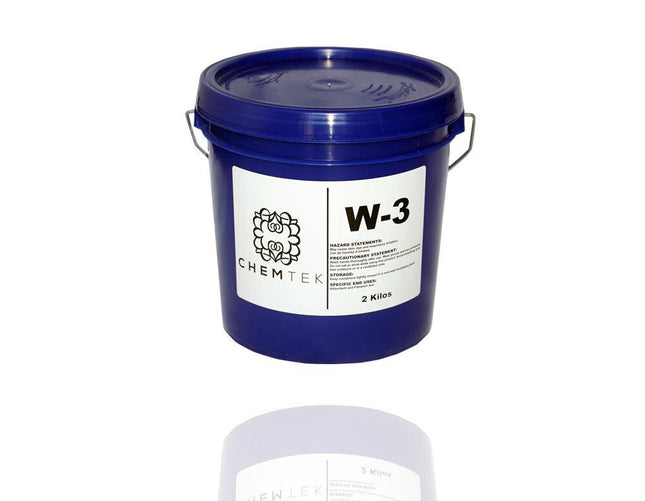
CHEMTEK W3 Acid Activated Bleaching Clay
CHEMTEK W3 Acid Activated Bleaching Clay W3 is a highly active adsorptive clay designed for difficult to bleach oils. It has a high cation exchange capacity paired with high moisture content making it ideal for adsorption of impurities such as chlorophyll, carotenes, heavy metals, phospholipids, soaps, and other impurities. W3 SDS W3 Technical Data Sheet
$50.00 - $2,250.00
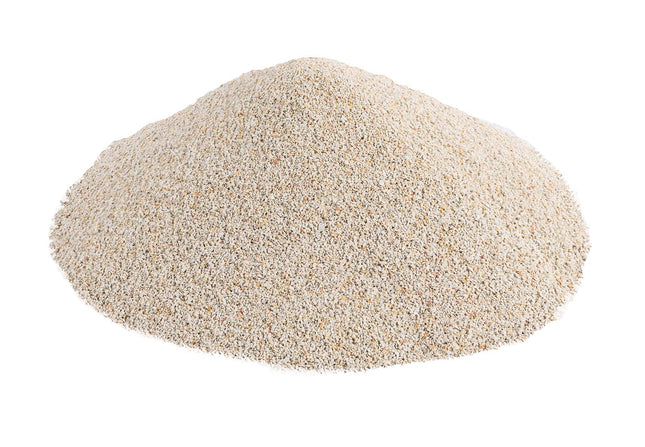
Carbon Chemistry ZeoClear™ Y
Carbon Chemistry ZeoClear™ Y ZeoClear™ Y is a granular attapulgite which has been thermally activated to remove impurities and maximize adsorption capabilities. An effect media for color remediation and general product improvement with high contaminant absorptivity. Key Features: Micron Size 250-595um Attapulgite granular media, alkaline medium Easy handling, fast flow, color improvement General product improvement with high contaminant absorptivity Color Remediation In-Line Filtration Hot Scrub Recirculate Granular Media FAQ: How do I use granular media? Zeolite adsorbents can be used inline during extraction with LPG solvents or in a hot scrub with non-polar solvents of higher BP like Heptane Is this a replacement for powders? The answer depends on what your processing goals are e.g. color removal, pesticide remediation, etc. Each adsorbent for filtration media will have its own unique set of properties including pH, pore size, polarity, surface area that make certain adsorbents more suitable to certain uses. Can I mix granular media and powders? Yes, you can either mix powders with granular media or place the granular media on top a bed of powdered media. This will however result in a more restricted flow which will require additional pressure to pass your solution through your filter cake. Do I need to bake the media? Media does not need to be baked prior to use but can be only superficial water will be removed which may improve performance. To remove superficial moisture, bake for 8hrs at 200C (392F) How do I know how much media to use? This will depend on a few variables such as the amount of your starting material, the age of your starting material, and desired color of your final product. How does the media need to be stored? before and after use. Before use; Keep container tightly closed and dry; store in a cool place. After use; Store in a well-ventilated area, this media is saturated with flammable/explosive solvent and can self-ignite if not not handled properly. Is the media safe to handle without PPE (Personal Protective Equipment)? Breathing must be protected when large quantities are decanted without local exhaust ventilation. When workers face exposure to dust exceeding the occupational exposure limits they must use appropriate certified respirators. Wear a NIOSH-certified (or equivalent) particulate respirator. What micron size filters are required? / The media is larger but are there fines? The media might be large but there are fine dust particles (about 5 million per lb.) that can get carried away in your solution and require separation. We suggest stacking a 5-micron filter on top of a 1-micron filter which will help keep your flow slow as well as filtering out any fine dust particles. The media didn't work, what did I do wrong? There is an exceptionally good chance you did not restrict your solvent flow enough. Try again with a much slower flow through your filter. Another variable you might consider adjusting is solvent temperature. Colder solvent will pull less lipids and waxes which can impede the efficiency of the adsorbent. Note: Bulk Bags and Bulk sizes are non-stocked items and will be ordered as needed and carry a several week lead time and require a forklift or pallet jack
$40.00 - $8,000.00
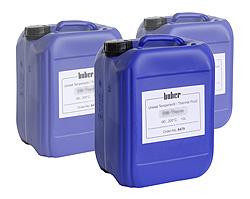
Huber SilOil M20.195/235.20, Heat transfer fluid -20 to 235 °C
Huber SilOil M20.195/235.20, Heat transfer fluid -20 to 235 °C SilOil M20.195/235.20 is a low-viscosity silicone fluid which, as a result of its special property profile, is particularly suitable for use as a cold and heat transfer medium in cryostats, thermostats and heat transfer installations. SilOil M20.195/235.20 can be used in the range from -20 °C to 195 °C (for open systems) and to 235 °C in externally sealed systems (Unistats). It should be borne in mind that, at high temperatures, SilOil M20.195/235.20 can be chemically altered by oxidising media, such as air, or substances with a catalytic effect, such as acids, lyes and various metal compounds. An increase in viscosity, and possibly even gelling of the fluid owing to crosslinking reactions, must be expected in the presence of oxidising agents, while contact with products having a catalytic effect usually induces a process of depolymerisation, resulting in a drop in viscosity. Advantages: Virtually insolubile in water Non-corrosive Low setting points and vapour pressures high flash points low toxicity odourless no coking tendency under thermal stress high thermal stability resistance to ageing Safety Data Sheet Heat transfer fluid M20.195/235.20 Working temperature °C -20 to 195/235 open/closed systems: -20°C…195°C Unistats (only closed): -20°C…235°C Material: silicon oil Viscosity at 25°C: 20 mm²/s Colour colourless, clear Material incompatibility Silicone rubber
$848.00 - $1,521.00
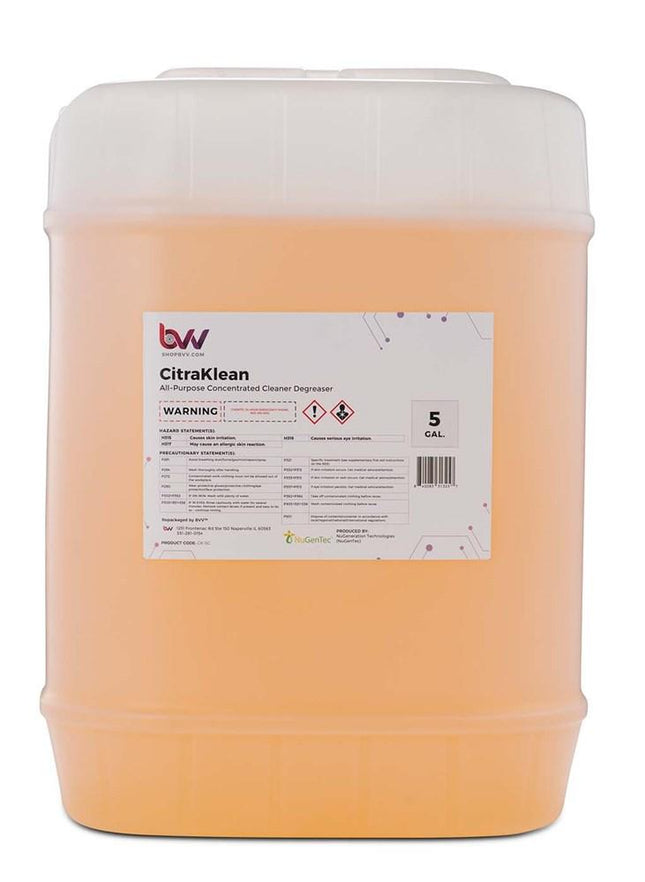
CitraKlean Natural All Purpose Concentrated Cleaner Degreaser
Description Citraklean - Technical Data Sheet Citraklean - Safety Data Sheet Citraklean - Certificate of Conformance NuGeneration Technologies’ CitraKlean is a natural liquid cleaner, formulated with the natural solvent derived from orange peels. CitraKlean offers environmental compatibility, user safety and low cost for disposal for heavy duty cleaning of all surfaces. CitraKlean is an excellent cleaner for tenacious oils and greases, and a great alternative to toxic petroleum solvents, chlorinated solvents, and caustics. Characteristics CitraKlean was formulated to be effective at cleaning in a broad range of applications. Effective on: Engine degreasing, road tar removal, brake dust, white walls, dashboards, plastic, vinyl and carpets, tools and machinery, motors, cabinets, oil stains, benches, concrete floors, tile floors, keyboards, copiers, printers, computer housings, desktops, furniture, metal and wood cabinets, porcelain, stainless steel, appliances, countertops, grills, copper, chrome, tubs,, shower stalls, medicine cabinets, toilet bowls, water spots, oils, greases, grass stains, ring-around-the-collar, work uniforms, general laundry pre-soak, etc. Directions for Use CitraKlean is effective at ambient temperatures and normally used at 1.5 to 100% by volume of water. The parameters can vary due to the type and extent of soils to be removed. Use at full strength for heavy-duty cleaning of grime, oil, and soot, or as a pre-wash for fabrics. Use at 1:1 ratio for heavy soils and kitchen grease on grills, vents, stoves, and countertops. Use at 1:8 ratio for spot cleaning on carpets and upholstery, food stains, coffee, sodas, crayon or lipstick stains. Use at 1:32 ratio for general purpose cleaning. Use at 1:64 ratio for use in carpet cleaning machines and power washers for vehicles, aluminum siding, windows, etc. Features To the best of our knowledge, this product is California Prop 65 compliant. Physical Properties Use Concentration 1:64 to Full Strength Bulk Density 8.5 lbs/gal Operating Temps Ambient pH, Concentrate 10.5 pH, @5% 10.0 VOC (Concentrate) 111 g/L Flash Point None Chelates No Soluble in water Complete Biodegradeable Yes Corrosive No Color Orange Material - Polymers Compatibility Material - Metals Compatibility CPVC 1 Aluminum Compatible Epoxy 3 Cast Steel Compatible Kel-F (PCTFE) 1 Monel Compatible Kynar (PVDF) 1 Brass Compatible Nylon 1 Copper Compatible Phenolic 1 Nickel Compatible Ryton (PPS) 1 Bronze Compatible Teflon 1 Hastelloy Compatible Viton (FKM) 1 Stainless Steel Compatible Buna-N (NBR) 2 Carbon Steel Compatible Cycolac (ABS) 2 Inconel Compatible PVC 2 Tantalum Compatible Polyethylene 3 Cast Iron* Incompatible Polyproylene 3 Incoloy 825 Compatible Natural Rubber (NR) 3 Titanium Compatible Neoprene 3 Ti6Al4V Compatible Nitrile 3 Zinc Compatible Tygon 3 Zinc Plating Compatible Galvanized Surfaces Compatible Magnesium** Incompatible
$20.00 - $95.00
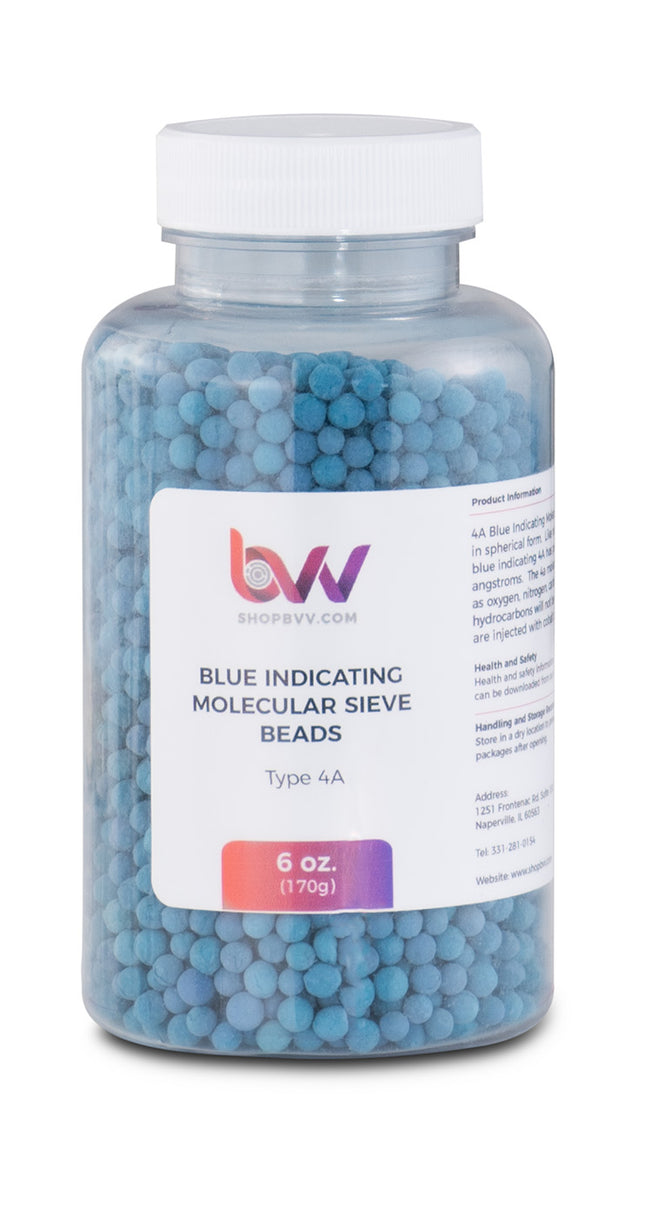
Indicating Molecular Sieve Beads Type 4A
Indicating Molecular Sieve Beads TYPE 4A (Blue) Description: 4A Blue Indicating Molecular Sieve is a porous, high capacity alkali metal aluminosilicate compound. Like non-indicating 4A molecular sieve, our blue indicating 4A molecular sieve has 4 Angstrom-sized pore openings that allow to adsorb all molecules adsorbed by 3A, molecular sieve, plus larger molecules like aromatic and branched-chain hydrocarbons. Handling & Storage Recommendations: Store in a dry location to prevent unintentional water adsorption. Reseal packages after opening to prevent contamination and unintentional water adsorption. We recommend that you rotate stock so the oldest material is used first. Please read the safety data sheet to ensure proper handling and always wear personal protection equipment when handling molecular sieve. Molecular Sieve 4A Indicating Technical Data Sheet Molecular Sieve 4A Indicating Technical Data Sheet
$16.00 - $1,075.00
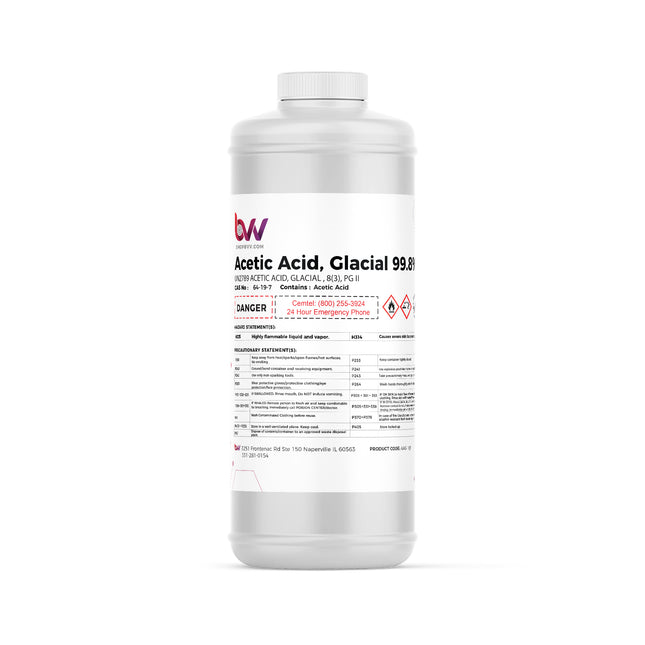
BVV™ Food & Lab Grade Glacial Acetic Acid 99.8%
BVV™ Food & Lab Grade Glacial Acetic Acid 99.8% pH: 2.4 Looking for a food-grade acid for your acid-base extraction? Our premium Glacial Acetic Acid is precisely what you need! As a leading supplier of high-purity solvents & chemicals, we provide the purest Glacial Acetic Acid available for your acid-base extraction and pH adjustment needs, ensuring exceptional results every time. Acetic acid, also known as ethanoic acid, is a versatile organic compound that plays a significant role in various industries and everyday life. It is a colorless liquid with a pungent, vinegar-like odor. Acetic acid (CH3COOH) is a weak acid that is highly soluble in water and many organic solvents. Due to its unique properties, acetic acid is widely used as a solvent, preservative, and flavoring agent in the food and beverage industry. It is also a key component in the production of vinyl acetate, which is used in the manufacturing of adhesives, coatings, and textiles. Furthermore, acetic acid is utilized in the synthesis of numerous chemicals, including pharmaceuticals, dyes, and plastics. Its diverse range of applications makes acetic acid an essential compound in many industrial processes, where it contributes to the creation of countless products that we encounter in our daily lives. Glacial Acetic Acid, also known as ethanoic acid, is a highly concentrated and pure form of acetic acid. Its name, "glacial," refers to its ability to freeze at a relatively low temperature (16.6C/61.9F). This characteristic sets it apart from other forms of acetic acid, making it ideal for various industrial applications, including acid-base extraction. Our Glacial Acetic Acid contains less than 1% water and is also considered water-free anhydrous acetic acid. In acid-base extraction, Glacial Acetic Acid serves as an essential component due to its unique properties. It acts as a weak acid, enabling the extraction of alkaline compounds from organic mixtures. With our premium Glacial Acetic Acid, you can achieve efficient separation of target compounds by adjusting the pH and facilitating the formation of soluble salts. In addition to its use in acid-base extraction, our Glacial Acetic Acid finds widespread application in various industries, including pharmaceuticals, textiles, and food processing. It is also known for its ability to dissolve and remove mineral deposits, making it an excellent choice for descaling and cleaning applications. At BVV, we take pride in delivering premium solvents, chemicals, and adsorbents that exceed customer expectations. Our team of experts is always available to provide personalized support and guidance, ensuring that you find the right solution for your needs. With our high-purity Glacial Acetic Acid & Sodium Hydroxide, you can optimize your acid-base extraction processes and pH adjustment needs to achieve exceptional results. Ready to elevate your acid-base extraction procedures? Order our High Purity Glacial Acetic Acid & Sodium Hydroxide today and experience its superior quality and performance firsthand. Contact us now to learn more and take advantage of our competitive prices and prompt delivery. Unlock the potential of your acid-base extractions with BVV! Flashpoint: 102°F Molecular Formula: C2H4O2 CAS No.: 64-19-7 UN 2789 Freezing Point: 16.6°C (61.9°F) Boiling Point: 117.9°C (244.2°F) Density: 1.05 g/cm3 @ 25°C (77°F) Water Solubility: 602.9 g/l completely Soluble @ 25°C (77°F) Acetic Acid Glacial 99.8% Certificate of Analysis (COA) Acetic Acid Glacial 99.8% Safety Data Sheet (SDS) Chemical Formula: CH3COOH Molecular Weight: 60.052 g·mol−1 CAS Registry Number: 64-19-7 Appearance Colorless, transparent liquid, Odor: Heavily vinegar-like Density 1.049 g/cm3 (liquid); 1.27 g/cm3 (solid) Boiling Point: 16 °C / 61°F GHS Pictograms: GHS Signal Word: Danger GHS Hazard Statements: H226, H314 GHS Precautionary Statements P280, P305+P351+P338, P310 UN Identification Number: 2789 Proper Shipping Name: Acetic Acid, Glacial Transport Hazard Class: 8 Packing Group: II DOT Placard: What is Acetic Acid? Acetic acid, also known as ethanoic acid, is a colorless liquid organic compound with a distinct sour taste and pungent smell. It is a member of the carboxylic acid family and is classified as a weak acid due to its partial ionization in aqueous solutions. Acetic acid is a fundamental building block in various chemical reactions and is commonly found in vinegar, giving it its characteristic sour taste. Chemically represented as CH3COOH, acetic acid consists of two main components: a carboxyl group (-COOH) and a methyl group (-CH3). It is produced naturally through fermentation processes, where bacteria convert ethanol into acetic acid. Additionally, acetic acid can be synthesized through various chemical methods for industrial applications. Acetic acid is widely utilized in various industries, including food, pharmaceuticals, textiles, and chemicals. It serves as a crucial ingredient in the production of plastics, solvents, dyes, and synthetic fibers. Its versatile nature makes it an essential component in countless products and processes, contributing to a wide range of applications across different sectors. What Is Acetic Acids Formula? Chemically represented as CH3COOH, acetic acid consists of two main components: a carboxyl group (-COOH) and a methyl group (-CH3). It is produced naturally through fermentation processes, where bacteria convert ethanol into acetic acid. Additionally, acetic acid can be synthesized through various chemical methods for industrial applications. What is Acetic Acids Structure? The structure of acetic acid consists of two carbon atoms (C), four hydrogen atoms (H), and two oxygen atoms (O) arranged in a specific pattern. It forms a molecule with a central carbon atom bonded to two oxygen atoms: one oxygen atom is double-bonded to the carbon (C=O) and the other is bonded via a single bond (C-OH). This arrangement creates a carboxyl group (COOH) at one end of the molecule. The remaining carbon and hydrogen atoms are bonded in a linear chain, resulting in the overall molecular structure of CH3COOH. What Is Acetic Acids Molar Mass? The molar mass of a chemical compound is a measure of the mass of one mole of that substance, expressed in grams per mole (g/mol). For acetic acid (CH3COOH), which is a simple organic compound, the molar mass is calculated by adding up the atomic masses of all the individual atoms in its chemical formula. Let's break down the components of acetic acid: Carbon (C) - Atomic mass: 12.01 g/mol Hydrogen (H) - Atomic mass: 1.01 g/mol (there are 2 hydrogen atoms) Oxygen (O) - Atomic mass: 16.00 g/mol (there are 2 oxygen atoms) Another Oxygen (O) - Atomic mass: 16.00 g/mol Hydrogen (H) - Atomic mass: 1.01 g/mol (there is 1 hydrogen atom) Now, add up the atomic masses: 12.01 g/mol (C) + 1.01 g/mol (H) + 1.01 g/mol (H) + 16.00 g/mol (O) + 16.00 g/mol (O) + 1.01 g/mol (H) = 60.05 g/mol Therefore, the molar mass of acetic acid is approximately 60.05 g/mol. This value is crucial for various chemical calculations and reactions involving acetic acid, including determining quantities in chemical reactions or preparing solutions with specific concentrations. What is the PKA of Acetic Acid? The pKa of acetic acid (CH3COOH) is approximately 4.75. The pKa value represents the acidity of a compound and indicates the strength of its dissociation in aqueous solution. Acetic acid is a weak acid, meaning that it does not completely dissociate into ions in water and has a relatively low tendency to donate protons (H+ ions). Is Acetic Acid A Weak or Strong Acid? Acetic acid (CH3COOH) is considered a weak acid. Weak acids are substances that only partially dissociate into ions when dissolved in water. In the case of acetic acid, it releases a limited number of hydrogen ions (H+) and acetate ions (CH3COO-) in water. This is in contrast to strong acids, which completely dissociate into ions and release a higher concentration of hydrogen ions in solution. What Is The Boiling Point of Acetic Acid? The boiling point of acetic acid is approximately 118.1 degrees Celsius (244.5 degrees Fahrenheit) at standard atmospheric pressure. However, this value can vary slightly depending on factors such as atmospheric pressure and impurities present in the acetic acid. What Is The Density of Acetic Acid? The density of acetic acid is approximately 1.049 grams per cubic centimeter (g/cm³) at 20 degrees Celsius (68 degrees Fahrenheit). Keep in mind that the density of acetic acid can vary slightly with temperature and concentration. What Is Glacial Acetic Acid? Glacial acetic acid, also known as anhydrous acetic acid, is a highly concentrated and pure form of acetic acid. The term "glacial" is used to describe its appearance, as it solidifies into ice-like crystals at room temperature due to its high freezing point. Glacial acetic acid typically has a concentration of around 99-100%, making it one of the purest forms of acetic acid available. This highly concentrated form of acetic acid is commonly used in various industrial, laboratory, and chemical applications. It is often utilized as a solvent, reagent, or catalyst in chemical reactions, as well as in the production of various chemicals, plastics, textiles, and pharmaceuticals. Glacial acetic acid's high purity and reactivity make it a valuable component in many manufacturing processes and scientific experiments. It's important to handle glacial acetic acid with care due to its corrosive and strong acidic properties. Proper safety precautions should be taken when working with this substance, including using appropriate protective equipment and following recommended handling procedures. What Is Acetic Acid Used For? Acetic acid is a versatile chemical compound with a wide range of applications across various industries. Here are some common uses of acetic acid: Food and Beverage Industry: Acetic acid is a key component in the production of vinegar, which is used as a condiment, flavor enhancer, and food preservative. It is also used in the production of pickles, sauces, and dressings. Chemical Industry: Acetic acid is used as a chemical intermediate in the production of various chemicals, including acetate esters, acetic anhydride, and vinyl acetate monomer. These chemicals are used in the manufacturing of plastics, synthetic fibers, dyes, and pharmaceuticals. Cleaning and Disinfecting: Acetic acid is commonly used as an environmentally friendly cleaning agent due to its mild acidity and disinfectant properties. It can effectively remove mineral deposits, stains, and mold from surfaces. Textile Industry: Acetic acid is used in the production of acetate fibers, which are used to make fabrics, textiles, and clothing items. It is also employed in dyeing and finishing processes. Photography: Acetic acid is used in photographic processes, including film development and as a fixing agent for prints. Preservation: Acetic acid is used to preserve and prevent spoilage in various agricultural products, such as fruits and vegetables. Laboratory and Research: Acetic acid is commonly used in laboratories for various purposes, including chemical analysis, pH adjustment, and buffer preparation. Medicine and Pharmaceuticals: Acetic acid is used in the synthesis of pharmaceutical compounds and as a solvent for certain medications and ointments. Wastewater Treatment: Acetic acid is used in wastewater treatment processes to adjust pH levels and promote the growth of beneficial microorganisms. Tanning Industry: Acetic acid is used in leather tanning processes to adjust the pH of the solutions and aid in the removal of unwanted substances. Plastics and Polymers: Acetic acid is a precursor in the production of polyvinyl acetate (PVA) and other polymer materials used in adhesives, coatings, and paints. Oil and Gas Industry: Acetic acid is employed in the oil and gas industry for processes such as well drilling, acidizing, and corrosion inhibition. Electronics Industry: Acetic acid is used for cleaning and etching electronic components and printed circuit boards. These are just a few examples of the diverse applications of acetic acid. Its chemical properties make it a valuable ingredient in numerous industrial and consumer products, contributing to various processes and sectors. What Are The Hazards of Acetic Acid? Acetic acid is generally considered safe when used properly and handled with care. However, like any chemical compound, it can pose certain hazards if not used and managed correctly. Here are some potential hazards associated with acetic acid: Corrosive Nature: Acetic acid is a corrosive substance, and concentrated solutions can cause severe irritation or burns to the skin, eyes, and respiratory tract upon direct contact. Prolonged exposure to the skin or eyes can result in chemical burns and tissue damage. Inhalation Risks: Inhaling acetic acid vapors or mists can irritate the respiratory system, causing symptoms such as coughing, shortness of breath, and throat irritation. Prolonged or intense exposure to vapors can lead to more severe respiratory effects. Fire and Explosion Hazard: Acetic acid is flammable, with a low flashpoint. Concentrated vapors or mists can ignite and potentially cause fires or explosions when exposed to an open flame, spark, or heat source. Incompatibility: Acetic acid may react with certain chemicals and substances, resulting in potentially hazardous reactions or releases of toxic gases. Proper storage and handling procedures are essential to prevent such interactions. Toxicity: Ingesting or consuming concentrated acetic acid can lead to serious health issues, including chemical burns in the digestive tract, internal injuries, and other toxic effects. Ingestion should be avoided. Environmental Impact: Improper disposal or release of acetic acid into the environment can harm aquatic life and ecosystems. It can also contribute to air pollution when released into the atmosphere. Sensitization: Prolonged or repeated exposure to acetic acid can lead to sensitization, where an individual becomes more susceptible to adverse effects upon subsequent exposures. To mitigate these hazards and ensure safe handling of acetic acid, it's important to follow proper safety guidelines and precautions How Do I Use Glacial Acetic Acid Safely? Using glacial acetic acid safely is essential due to its corrosive and strong acidic properties. Follow these guidelines to ensure safe handling and use: Personal Protective Equipment (PPE): Wear appropriate PPE, including chemical-resistant gloves, safety goggles, a lab coat or protective clothing, and closed-toe shoes to prevent contact with the skin, eyes, and clothing. Well-Ventilated Area: Work in a well-ventilated area or use a fume hood to minimize inhalation exposure. Ensure proper ventilation to prevent the buildup of fumes. Avoid Contact: Avoid direct skin contact with glacial acetic acid. In case of accidental skin contact, immediately rinse the affected area with copious amounts of water and seek medical attention if irritation persists. Eye Protection: Wear safety goggles or a face shield to protect your eyes from potential splashes or fumes. In case of eye contact, rinse the eyes thoroughly with water and seek immediate medical assistance. Handling and Pouring: When handling glacial acetic acid, use chemical-resistant containers and utensils. Pour slowly to avoid splashing and minimize the release of fumes. Always use a chemical-resistant funnel for transferring the acid. Dilution: If dilution is required, always add glacial acetic acid to water, never the other way around. Adding water to the acid can cause a violent reaction. Storage: Store glacial acetic acid in a cool, dry, and well-ventilated area, away from direct sunlight and incompatible substances. Ensure proper labeling of containers and keep them tightly sealed to prevent evaporation and fume release. First Aid: Have an eyewash station and safety shower readily accessible in case of accidental exposure. Know the location of emergency exits and procedures. Emergency Response: In case of spills or leaks, contain and absorb the acid using appropriate absorbent materials. Neutralize any spilled acid with a suitable neutralizing agent under proper ventilation. Dispose of contaminated materials as hazardous waste. Training: Ensure that personnel handling glacial acetic acid are trained in its proper handling, storage, and emergency response procedures. Regularly review safety protocols. Medical Attention: If you experience skin contact, eye exposure, or inhalation of fumes, seek medical attention immediately. Provide medical professionals with accurate information about the substance involved. Always refer to the Material Safety Data Sheet (MSDS) or Safety Data Sheet (SDS) provided by the manufacturer for specific safety information and handling guidelines for the glacial acetic acid product you are using. Following proper safety protocols and practices is crucial to prevent accidents and ensure the well-being of individuals working with glacial acetic acid.
$21.00 - $1,425.00
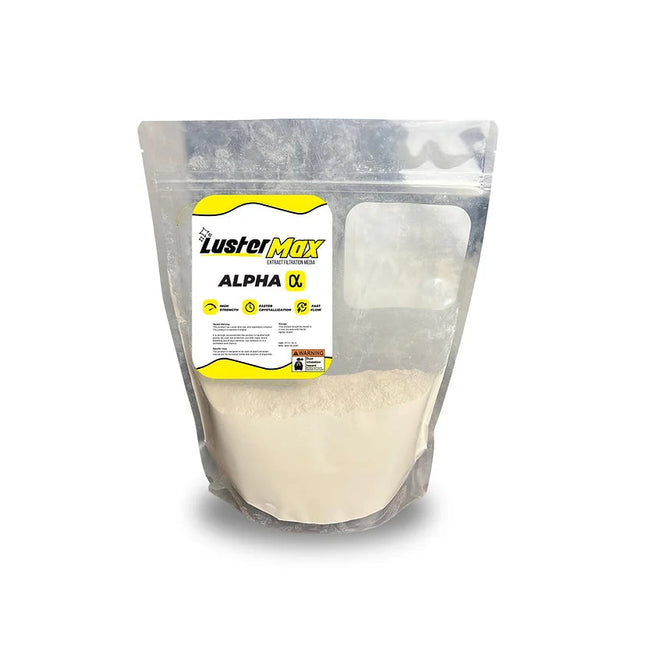
LusterMax ALPHA
LusterMax ALPHA alpha by LusterMax is an activated bentonite clay with modified characteristics best suited for botanical extraction being made into the wide variety of end product types, This takes a balance of strength and aversion for precious aromatic and flavor producing compounds. Developed by an experienced extraction technician, LusterMax qualities stem from its attention to 4 variable characteristics that make up how well and absorbent media works. Mineral Composition: What is the bentonite clay composed of. Particle Size Range: What are the particle sizes and how well do they let liquid flow through. Degree Of Activation: How much surface area is unlocked via activation Post Activation pH: What is the measured pH and how this affects crystallization speed. LusterMax products are designed by extractors to be simple and of omni-use. Meaning you can ditch your complicated 4-part blend and use LusterMax to achieve the same quality results with the occasional Silica Gel additive for extremely degraded biomass. No media option on the market exists that offers this level of strength and aversion for terpenes at the price point that allows manufacturers to fully utilize the refinement of adsorbent media like LusterMax. See our Neutral version of this exact media for lighter remediation usage that is still magnitudes stronger then any other neutral clay on the market. Also our own Silica additive Si Strength+ is available to pair with your order of a bentonite clay. Now available! We are happy to introduce the LusterMax Protocol, which is a 32 page training manual of how to implement CRC in your lab or optimize your existing process to be more precise, have less variations, and keep it cleaner. SDS File
$36.00 - $288.00
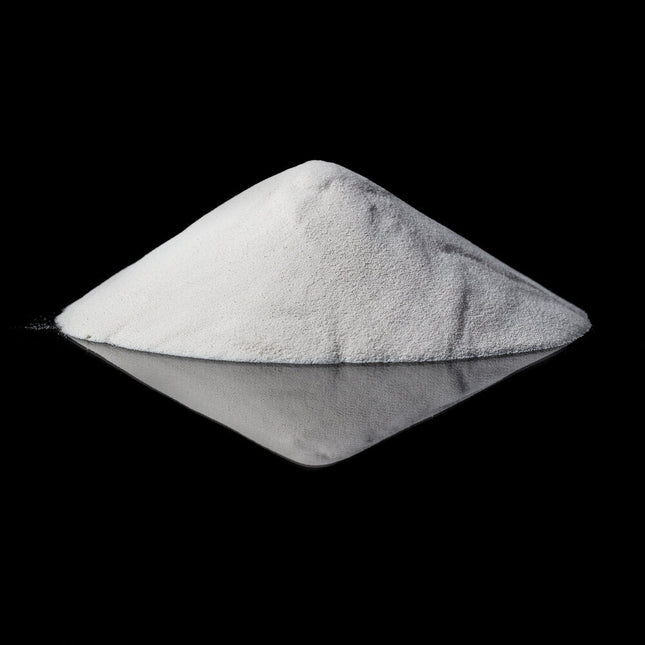
CHEMTEK Alumina 150
Alumina 150 is a neutral pH adsorbent used to remove moisture, free fatty acids, and phospholipids to speed up crystallization and to improve the end products’ oxidative stability. Alumina 150 SDS
$65.00 - $3,250.00
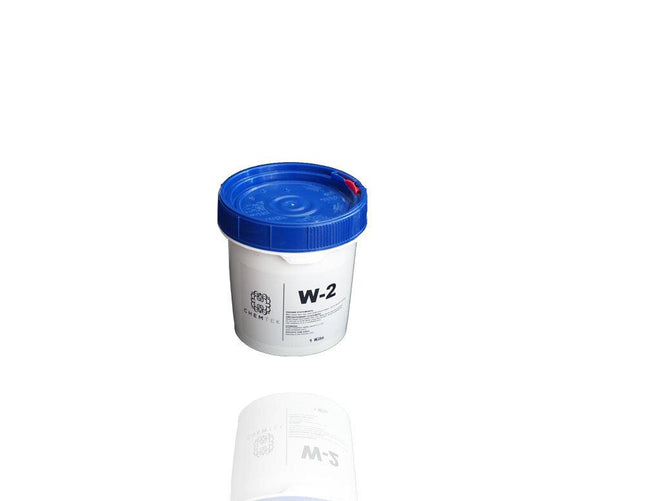
CHEMTEK W2 Heat Activated Natural Bleaching Clay
CHEMTEK W2 Heat Activated Natural Bleaching Clay W2 is a natural bleaching clay offering mild yet efficient results. It is heat activated to increase its adsorptive power without the use of any acids. The lack of acid prevents terpene isomerization and keeps the terpene profile the same while also slowing the oxidation rate of the oil thus increasing its shelf life. W2 is heavier in bulk density giving it lower oil retention. W2 SDS W2 Technical Data Sheet
$60.00 - $350.00
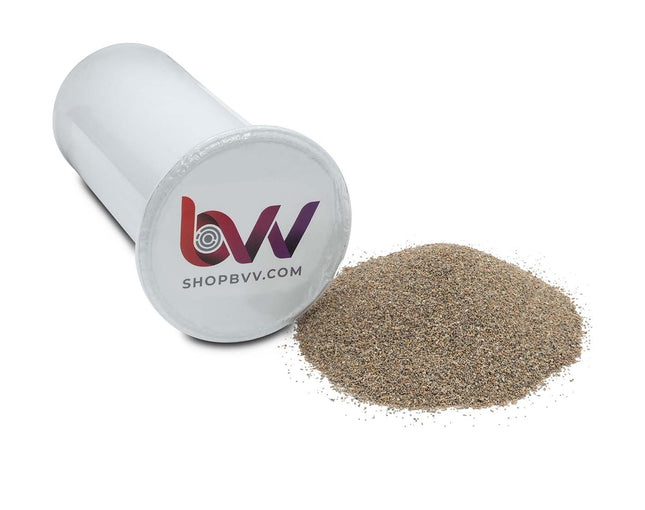
AFS Ultra Clear Cartridge
BVV™ AFS Disposable Ultra Clear Cartridge Note: Stainless Steel filter housing sold separately. (Click Here for Housing) AFS Instruction Manual Download Here AFS Filters are the first and only disposable color remediation filter cartridges for the botanical extraction industry. The Patent Pending design allows for an easy to use solution implemented into existing extraction systems; and is now available as a standard integration from many equipment manufacturers. AFS Filters are a simple solution that allows for the use of prepackaged filters, which are available in different recipes depending on the application. With the integrated 2.5µm paper filter molded and sealed into the cup there is no media leak through. Pre-packed means there's no need to be an expert in remediation filter media and how to construct filters; as well as eliminates the messy process of building/packing filters yourself. Disposable offers no need for cleaning the filter housings afterwards and trying to un-clog stainless filter screens. Less R&D investment, less mess, and less down time allows for higher throughput and more profit. The media contained in the BVV™ Ultraclear filter cartridge is Ultra-clear is a high-performance granular attapulgite that is effective in removing a wide range of polar impurities including color bodies, surfactants, water, and free fatty acids while maintaining target compounds. As a granular media Ultraclear is easy to use, safe to handle, and does not require baking or wetting before use. Using only made in the USA materials that are FDA-GRAS. Technical Specifications: Life Span: 1 Time use, Good for 5-7 lbs. of dry material. Temperature Rating: -40°C-70°C Top Seal: Induction Sealed (No glue is used) Filter: Cellulose Paper Pressure Rating: Recommended 60psi, Paper will hold 80-90 psi Max. Media: USA Made High-performance granular attapulgite Shell Material: Polypropylene Excellent compatability and Safe for chemicals in our industry (Butane, Propane, Ethanol). Pressure Method: Nitrogen Assist, unless you open blast CRC. Then you can assist with an air compressor. AFS Cup weight: 48g Media Fill Volume: 110-120g Recommend Minimum Biomass: 1lb (lesser biomass will see drastic yield losses) AFS Safety Data Sheets *Please recycle your spent Cartridges. *Yield losses under refinement are to be expected but overall potency will be retained and will proportionally increase.
$55.00
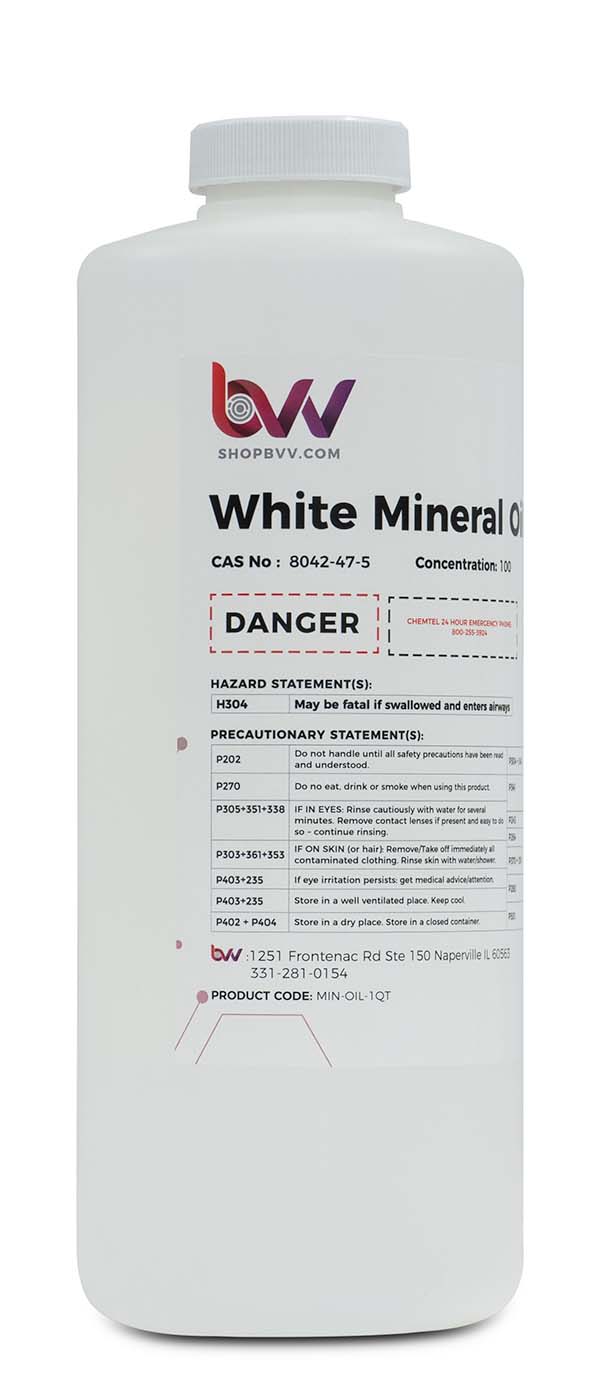
BVV Mineral Oil 7 White "Clear" (USP/NF Food Grade)
BVV Mineral Oil 7 White NF (USP/NF) What is Mineral Oil? Mineral Oil is a lightweight, colorless, odorless oil obtained from the by-product of refining crude oil to make gasoline and other petroleum based products. Mineral Oil is also known as White Oil, Liquid Paraffin, Paraffinum Liquidum (Latin), Liquid Petroleum, and White Mineral Oil. Mineral Oil uses are widely revered in cosmetic and industrial manufacturing. Food Grade Certified to FDA 21 CFR 172.878 BVV Mineral Oil 7 White NF - COA BVV Mineral Oil 7 White NF - Spec Sheet
$10.00 - $750.00
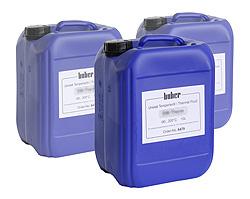
Huber SilOil M80.055.03, Heat transfer fluid -80 to 55 °C
Huber SilOil M80.055.03, Heat transfer fluid -80 to 55 °C SilOil M80.055.03 is a low-viscosity silicone fluid which, as a result of its special property profile, is particularly suitable for use as a cold and heat transfer medium in cryostats, thermostats and heat transfer installations. The fluid can be used in the range from -80 °C to 55 °C. It should be borne in mind that, at high temperatures, SilOil M80.055.03 can be chemically altered by oxidising media, such as air, or substances with a catalytic effect, such as acids, lyes and various metal compounds. An increase in viscosity, and possibly even gelling of the fluid owing to crosslinking reactions, must be expected in the presence of oxidising agents, while contact with products having a catalytic effect usually induces a process of depolymerisation, resulting in a drop in viscosity Advantages: virtually insolubile in water non-corrosive low setting points and vapour pressures high flash points low toxicity odourless no coking tendency under thermal stress high thermal stability resistance to ageing chlorine free Safety Data Sheet Heat transfer fluid M80.055.03 Working temperature °C -80 to 55 open/closed systems: -80°C…55°C Material: silicon oil Viscosity at 25°C: 3 mm²/s Colour colourless, clear Material incompatibility Silicone rubber
$917.00 - $1,580.00
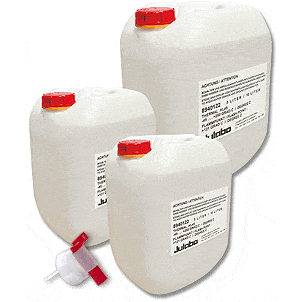
Julabo C2 Thermal Bath Fluid - 10 Liters
Julabo C2 Thermal Bath Fluid JULABO Thermal bath fluids are ideally suited for all of your temperature control applications and guarantee safe and reliable operation. Choosing the proper bath fluid is critical for best results in temperature control. Viscosity, oxidation characteristics and heat transfer of Thermal fluids are specifically matched with each JULABO temperature control unit. C2 Thermal Bath Fluid Product Data Sheet C2 Thermal Bath Fluid SDS JULABO Thermal bath fluids have been carefully selected and are optimized for maximum performance with JULABO instruments. Benefits Low toxicity Low viscosity High stability Minimum odor Good heat conductivity Low corrosion tendency Wide temperature ranges Technical Data Order no. 10 liters 8891400 Working temperature (°C) -90...+60 Flash point (°C) > +75 Fire point (°C) > +430 Viscosity (kinematic at 20 °C in mm²/s) 2 Density (at 20 °C in g/cm³) 0.873 Pour point (°C) -120 Boiling point (°C) 229 Ignition temperature (°C) 430 Color clear
$1,415.12
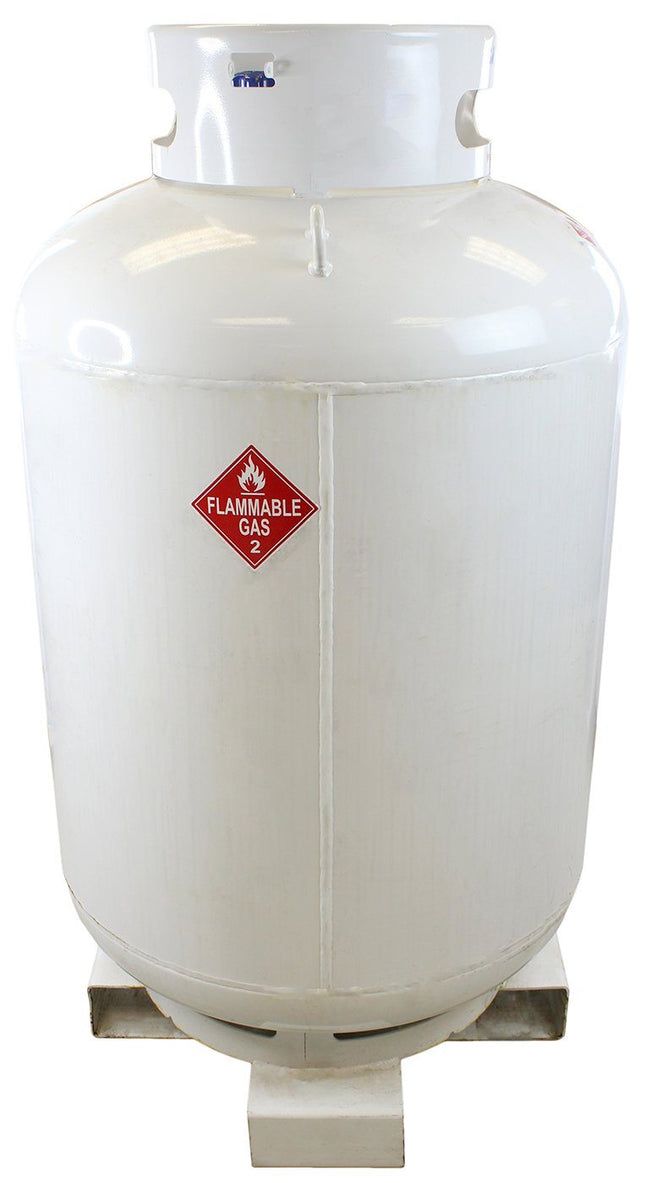
Half Ton - High Purity USA 70/30% N-Butane/Propane Blend - 99.5% Guaranteed
Half Ton - High Purity USA 70/30% N-Butane/Propane Blend - 99.5% Guaranteed DISCLAIMER(S): This unit is intended for LEGAL purposes only, to be used in accordance with local laws and ordinances. Use only in WELL VENTILATED AREAS! Notice: This item will ship via Freight ONLY. This tank requires a CGA 510 fitting - Sold Separately BVV™ always recommends distillation of every solvent before use. *Actual liquid weight is 483LB California now prohibits the retail sale of any Non-Odorized butane in quantities larger than 150ml. If you are not a retail purchaser you can call in to place an order. Permitted Sales Include the Following: Medical Collectives or Cooperatives operating under CA Health & Safety Code Section 11362.775 Persons licensed to perform volatile solvent extraction activity under CA Bus & Prof Code Division 10 Manufacturers, wholesalers, resellers, or retailers solely for the purpose of resale High purity 70/30% N-Butane/Propane is USA sourced, and guaranteed to be 99.5% pure. This instrument grade solvent helps to produce a higher quality extract by reducing mystery oils and contaminants. Solvent comes in a DOT refillable LP tank with liquid withdrawal valve (Diptube). This product is clean, colorless and odorless. *Actual liquid weight is 483LB BVV™ Dual Blend SDS Due to FAA regulations, solvent tanks cannot be safely transported via means other than ground. Any order that has solvent will not be shipped in an expedited fashion. If an order with solvent is combined with any other items and chosen to be expedited, that entire order will ship via UPS Ground/Freight. We will not split up any orders and ship them separately. If a customer is wanting to expedite specific items and order solvent, 2 separate orders (1 for the solvent and 1 for the expedited items) will need to be placed in order to do so. Solvents do not ship to Hawaii, Puerto Rico, or any other US Territory outside of the contiguous 48 States. Shipping Solvent to Alaska may ONLY ship via freight and will be required to travel through Canada. We have this policy in place to ensure safety when transporting solvents, and to prevent any issue with shipping times for our customers.
$2,940.00
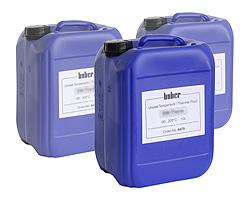
Huber SilOil M40.165/220.10, Heat transfer fluid -40 to 220 °C
Huber SilOil M40.165/220.10, Heat transfer fluid -40 to 220 °C SilOil M40.165/220.10 is a low-viscosity silicone fluid which, as a result of its special property profile, is particularly suitable for use as a cold and heat transfer medium in cryostats, thermostats and heat transfer installations. SilOil M40.165/220.10 can be used in the range from -40 °C to 165 °C and to 220 °C in externally sealed systems (Unistats). It should be borne in mind that, at high temperatures, SilOil M40.165/220.10 can be chemically altered by oxidising media, such as air, or substances with a catalytic effect, such as acids, lyes and various metal compounds. An increase in viscosity, and possibly even gelling of the fluid owing to crosslinking reactions, must be expected in the presence of oxidising agents, while contact with products having a catalytic effect usually induces a process of depolymerisation, resulting in a drop in viscosity. Advantages: Virtually insolubile in water Non-corrosive Low setting points and vapour pressures High flash points Low toxicity No coking tendency under thermal stress High thermal stability Resistance to ageing Chlorine free Safety Data Sheet Heat transfer fluid M20.195/235.20 Working temperature °C -40 to165/220 open/closed systems: -40°C - 165°C Unistats (only closed): -40°C - 220°C Material: silicon oil Viscosity at 25°C: 10 mm²/s Colour colourless, clear Material incompatibility Silicone rubber
$848.00 - $1,521.00
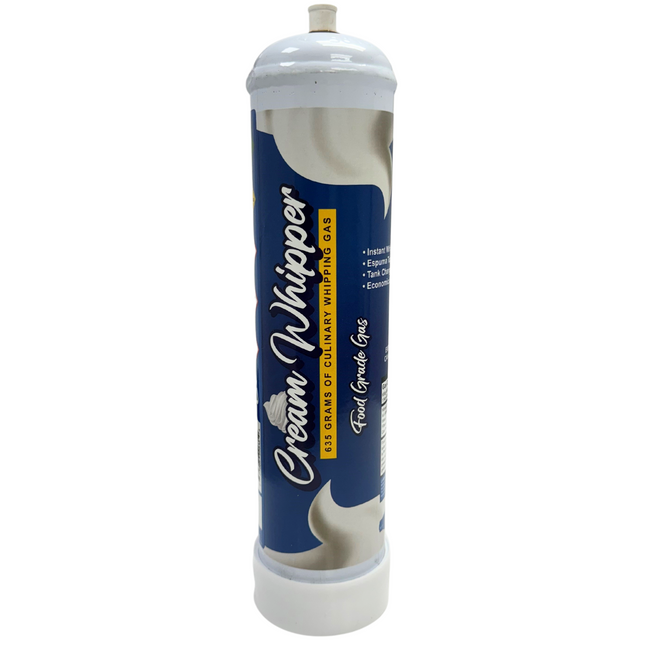
635G Ms. Cream Food-Grade Nitrous Oxide Tank 99.5% (635g / 321 liters) Made in Italy
Ms. Cream 635g Nitrous Oxide Tank 99.5% Food Grade Made in Italy, Triple Filtered Mr. Cream® is a true culinary gas. Trusted for it high purity and known for not adding any strange or unknown flavors to your cream that other lesser quality import gasses my leave behind. The original brand since the 1930's. At BVV we have tried many and this is the highest purity tank we have carried. This innovative cylinder is the fastest and easiest way to replenish your cream. It is not only a good assistant for making dessert at home but also a new solution for the industrial catering industry! Before using our whipped cream-making equipment you must first read the manufacturer's instructions. This will show you how to safely charge your cream using the cream 635g tank. 635g Charger - 1.14lbs Liquid N2O - 321 Gas Liters of N2O. Cylinder Fitting: M11x1 Thread (compatible with this Regulator M11x1-CR) Tank Pressure: 755 PSI Includes 1 nozzle per tank. *At end of use use this nozzle to completely empty the tank for recycling. Do not heat over 120F SUPERIOR GAS QUALITY - Each tank is filled with the purest, and highest quality E942 food grade gas. That is why you will not have a hard time making chocolate or vanilla, mint, or Bailey's flavored cream whipper. Cocktail foams, airy sauce, mousse, and hot or cold foam can be made easily, too. FOOD-GRADE & LONG SHELF LIFE - Ms Cream whipped tanks are made with food-grade compliance and production standards. Each tank has a long shelf life of 5 years so you can use them over a period of time. ANTI-LEAKAGE DESIGN - Ms Cream tanks conform with Manufacturing International Standards such as ISO 9001, and ISO 9002. Any cream dispenser can be used with this cylinder. UNIVERSAL COMPATIBILITY - Compatible with all professional whipped cream makers in the market. From now on, you can easily finish making whipped cream in a few seconds and without leaving odors or contaminants in the dispenser. RECYCLEABLE CONTAINER - Recycle empty tank with other metal recycling. The tank is considered empty if you hear a clicking noise coming form the valve when you shake it. What Is Nitrous Oxide? Nitrous Oxide is a chemical compound with the formula N2O. It is a colorless, non-flammable gas with a slightly sweet odor and taste. Nitrous oxide is often used for various purposes due to its unique properties and effects. What is Nitrous Oxide Used For? Nitrous oxide (N2O) is most commonly used in the culinary world for various purposes, primarily for creating foams, whipped creams, and infusions. Outside the culinary world nitrous oxide is also commonly utilized as a propellant, a cryogenic refrigerant, and as a performance-enhancing additive for internal combustion engines. Here's how nitrous oxide is most commonly used in culinary applications: Whipped Cream: Nitrous oxide is perhaps most well-known in the culinary field for its use in making whipped cream. In this application, heavy cream and sweeteners are combined in a whipped cream dispenser or siphon, and nitrous oxide cartridges are used to pressurize the dispenser. When the cream is released from the dispenser, the sudden release of pressure causes the nitrous oxide to expand and whip the cream into a light and fluffy texture. This method allows for the creation of stable whipped cream that retains its texture for an extended period. Foams: Chefs use nitrous oxide to create foams from various liquids, such as fruit juices, sauces, and purees. To make a foam, the desired liquid is mixed with a gelling agent, strained, and loaded into a whipped cream dispenser along with nitrous oxide. When dispensed, the nitrous oxide aerates the liquid, resulting in a light and airy foam that can be used as a garnish or flavor enhancer. Infusions: Nitrous oxide can be used to infuse liquids with the flavors of herbs, spices, fruits, or other aromatic ingredients. For example, herbs like basil or spices like cinnamon can be placed in a whipped cream dispenser along with a liquid (e.g., oil or alcohol) and nitrous oxide. The pressurized nitrous oxide infuses the liquid with the flavors and aromas of the added ingredients quickly. Cocktails: Some bartenders use nitrous oxide to create foam or froth on cocktails, adding a unique visual and textural element to drinks. This technique is especially popular in molecular mixology. Sauces and Dressings: Nitrous oxide can be used to create light and airy sauces or dressings. By adding nitrous oxide to a mixture of liquids and ingredients, chefs can achieve a desired texture and consistency. Desserts: Nitrous oxide can be used to create innovative desserts, such as foamy fruit purees, mousse-like textures, and light, airy soufflés. It's essential to use food-grade nitrous oxide and follow proper safety precautions when using it in culinary applications. The use of nitrous oxide cartridges and whipped cream dispensers is common in professional kitchens and home cooking to achieve these culinary effects. What Are The Hazards Of Nitrous Oxide? Nitrous oxide (N2O), while commonly used in various applications can pose certain hazards if not used properly. Here are some potential hazards associated with nitrous oxide: Asphyxiation: The most significant hazard of nitrous oxide in culinary use is the risk of asphyxiation. Nitrous oxide can displace oxygen in an enclosed space, leading to oxygen deprivation if inhaled in high concentrations. This can result in dizziness, loss of consciousness, and even death. Frostbite: Nitrous oxide is stored as a compressed liquid and is extremely cold when released. Contact with liquid nitrous oxide can cause frostbite or cold burns to the skin. Care should be taken when handling nitrous oxide cartridges or dispensers. Is Nitrous Oxide Flammable? Nitrous oxide (N2O) is not flammable in the typical sense because it does not support combustion. However, it can contribute to the combustion of other substances. Here's a more detailed explanation: Non-Flammable: Nitrous oxide itself does not burn or catch fire. It is an oxidizer, meaning it can support the combustion of other substances by providing oxygen. When nitrous oxide is used in applications like rocket propulsion or automotive nitrous systems, it does not ignite by itself. Enhancing Combustion: Nitrous oxide is sometimes used in combination with fuel in internal combustion engines to increase power output. In this context, it is often referred to as "nitrous" or "NOS." When nitrous oxide is injected into the engine's intake, it provides additional oxygen, allowing more fuel to burn, resulting in increased engine power. However, it's important to note that this process is controlled and safe when used as intended in automotive applications. Safety Precautions: While nitrous oxide is generally considered safe when used according to manufacturer guidelines, improper handling or misuse can be hazardous. Nitrous oxide should not be exposed to open flames, sparks, or high temperatures, as it can decompose at elevated temperatures and pressure, potentially leading to the release of oxygen and nitrogen gases. In summary, nitrous oxide is not flammable by itself, but it can enhance the combustion of other materials when used in controlled and purposeful applications. When using nitrous oxide, it's essential to follow safety guidelines and avoid exposing it to conditions that could lead to its decomposition or unintended ignition. How Do I Use Nitrous Oxide Safely? Using nitrous oxide (N2O) safely is crucial to prevent accidents and health risks. Here are some general guidelines for using nitrous oxide safely: Follow Manufacturer's Instructions: Always follow the manufacturer's instructions for any equipment or cartridges containing nitrous oxide. Different devices or cartridges may have specific usage guidelines. Ventilation: Ensure that you use nitrous oxide in a well-ventilated area. Adequate ventilation helps disperse any gas leaks and prevents the buildup of nitrous oxide in confined spaces, reducing the risk of asphyxiation. Avoid Direct Inhalation: Never inhale nitrous oxide directly from cartridges, whipped cream dispensers, or any other source. Inhaling nitrous oxide for recreational purposes can be dangerous and is not recommended. Protective Gear: When handling nitrous oxide cartridges or equipment, especially if they contain liquid nitrous oxide, wear appropriate protective gear, such as gloves and safety glasses, to prevent frostbite or cold burns. Store Safely: Store nitrous oxide cartridges and equipment in a cool, dry place away from direct sunlight and heat sources. Keep them out of the reach of children and unauthorized individuals. No Smoking: Avoid smoking or open flames near nitrous oxide, while nitrous oxide is not flammable, it will support combustion to the same extent as oxygen. Training and Education: Ensure that individuals using nitrous oxide equipment are trained in its safe handling and usage. Leak Detection: Regularly check for leaks in nitrous oxide equipment and connections. Use a leak detection solution (soapy water) to identify leaks by observing bubbles at the connections. Proper Disposal: Dispose of used nitrous oxide cartridges and equipment according to local regulations and guidelines. Do not puncture or incinerate cartridges. Emergency Preparedness: Be prepared for emergencies by having safety equipment, such as fire extinguishers and first-aid kits, readily available in areas where nitrous oxide is used or stored. Follow Legal Regulations: Abide by local laws and regulations regarding the sale, purchase, and use of nitrous oxide. In some areas, nitrous oxide may be subject to restrictions due to its potential for misuse. Always exercise caution and prioritize safety when using nitrous oxide, whether it's for culinary, automotive, medical, or other legitimate purposes. If you have specific concerns or questions about the safe use of nitrous oxide in a particular context, consult with experts or regulatory authorities in your area.
$21.82 - $130.92
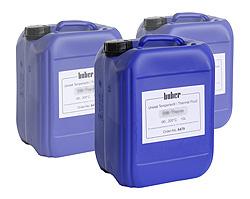
Huber SilOil M60.115/200.05, Heat transfer fluid -60 to 200 °C
Huber SilOil M60.115/200.05, Heat transfer fluid -60 to 200 °C SilOil M60.115/200.05 is a low-viscosity silicone fluid which, as a result of its special property profile, is particularly suitable for use as a cold and heat transfer medium in cryostats, thermostats and heat transfer installations. SilOil M60.115/200.05 can be used in the range from -60 °C to 115 °C (for open systems) and to 200 °C in externally sealed systems (Unistats). It should be borne in mind that, at high temperatures, SilOil M60.115/200.05 can be chemically altered by oxidising media, such as air, or substances with a catalytic effect, such as acids, lyes and various metal compounds. An increase in viscosity, and possibly even gelling of the fluid owing to crosslinking reactions, must be expected in the presence of oxidising agents, while contact with products having a catalytic effect usually induces a process of depolymerisation, resulting in a drop in viscosity Advantages: virtually insolubile in water non-corrosive low setting points and vapour pressures high flash points low toxicit odourless no coking tendency under thermal stress high thermal stability resistance to ageing chlorine free Safety Data Sheet Heat transfer fluid M60.115/200.05 Working temperature °C 60 to 115/200 open/closed systems: -60°C…115°C Unistats (only closed): -60°C…200°C Material: silicon oil Viscosity at 25°C: 5 mm²/s Colour colourless, clear Material incompatibility Silicone rubber
$848.00 - $1,521.00
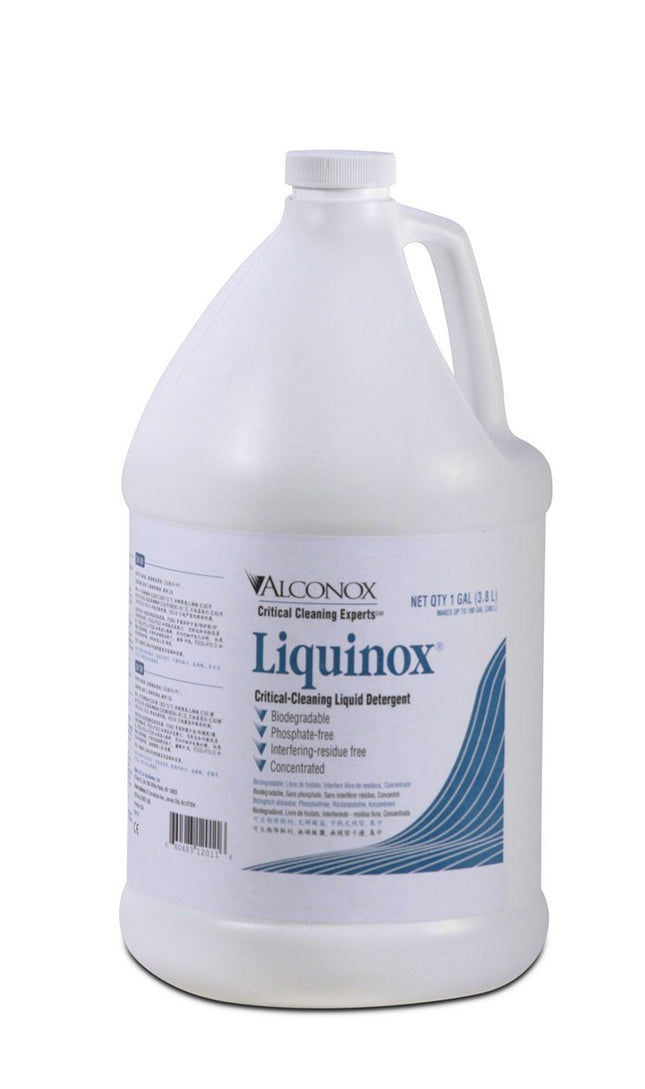
Liquinox - Critical Cleaning Detergent
Liquinox is a concentrated, anionic detergent for manual and ultrasonic cleaning. Free rinsing to give you reliable results without interfering residues. Extremely mild and completely soluble in hard and soft water. USDA authorized. Dilute 1:100. pH 8.5 Concentrated to save you money Replaces corrosive acids and hazardous solvents Phosphate free, biodegradable and readily disposable Free rinsing to give you reliable results and no interfering residues Use to pass your cleaning validation tests for lab accreditation and plant inspection approval Used to clean: Healthcare instruments, laboratory ware, vacuum equipment, tissue culture ware, personal protective equipment, sampling apparatus, catheters, tubing, wine glasses, clean rooms, medical devices, optical parts, electronic components, pharmaceutical apparatus, cosmetics manufacturing equipment, metal castings, forgings and stampings, industrial parts, pipes, tanks and reactors. Authorized by USDA for use in federally inspected meat and poultry plants. Passes inhibitory residue test for water analysis. Used for phosphate sensitive analysis ware. FDA certified. Used to remove: Soil, grit, grime, slime, grease, oils, blood, tissue, particulates, deposits, chemical and solvents. Surfaces cleaned:Corrosion inhibited formulation recommended for glass, metal, stainless steel, porcelain, ceramic, plastic, cement and fiberglass. Can be used on soft metals such as copper, aluminum, zinc and magnesium if rinsed promptly. Used for art restoration. Corrosion testing may be advisable. Cleaning method: Soak, brush, sponge, cloth, ultrasonic, flow through clean-inplace. Will foam—not for spray or machine use. Make a fresh 1% solution (2 1/2 Tbsp. per gal., 1 1/4 oz. per gal. or 10 ml per liter) in cold, warm or hot water. If available, use warm water. Use cold water for blood stains. For difficult soils, raise water temperature and use more detergent. Clean by soak, circulate, wipe or ultrasonic method. Not for spray machines, will foam. RINSE THOROUGHLY—preferably with running water. For critical cleaning, do final or all rinsing in distilled, deionized or purified water. For food contact surfaces, rinse with potable water. Used on a wide range of glass, ceramic, plastic and metal surfaces. Corrosion testing may be advisable. Formerly known as LIQUI-NOX.
$20.00 - $130.00
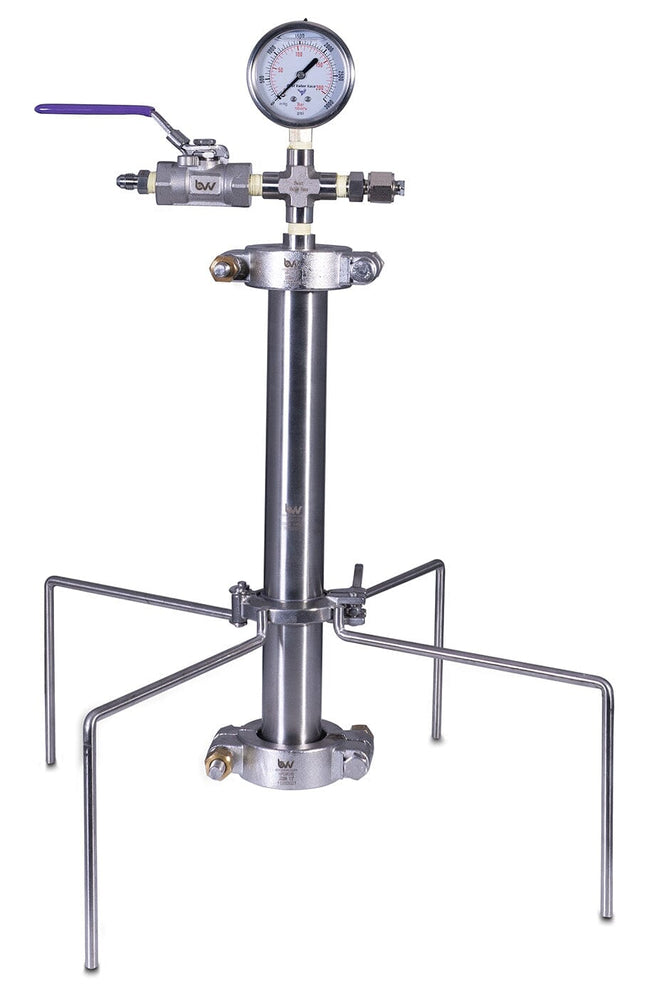
High Pressure Wood Stabilizing Chamber
High Pressure Wood Stabilizing Chamber A BVV EXCLUSIVE! This is our high pressure wood stabilizing column that can perform rapid wood stabilization @ 1600 PSI (1.5" Diameter Tube) & 450 PSI (3"/ 6" Diameter Tube). This extreme pressure makes the toughest woods easy to impregnate with wood stabilizer in as little as 15min. Then its off to the oven for a quick cure and its finished. The blanks in the photo, all 3 were stabilized and cured in less than 1 hour and 15 min, including cleanup. The system is simple. Load your blanks into the column and fill no more than 80% with resin. (make sure the blanks are submerged) Then close the system and turn on the pump set to 1600 psi. Watch the video and check out the instruction manual for details. The compressor you will need can be ordered from this site (GX Pumps Click This Link). BVV does not yet carry the compressor for this system. But our hose will connect directly to the compressor. If the compressor is out of your reach a high pressure hand pump can be used. (GX Hand Pumps Click This Link) The system comes with an installed safety pressure relief burst disk rated for 1800 PSI. (1.5" Diameter tubes) & 450 PSI. (3"/ 6" Diameter tube) Should you exceed the pressure of the system the disk will rupture releasing pressure. What's Included Wood stabilizing manual *Coming Soon 3/1/24 for 3"/ 6" Diameter. Braided stainless steel hose 2500 psi rated. Main column, stand and top cap valve manifold assembled. Extra safety burst disk, for 1.5" Diameter Tube. 3"/ 6" Tubes self reset. BVV warranties all the components except valves to be free from defects for 1 year. BVV does not warranty any claims where resin has been released/backflowed into the manifold hose or valve. Resin is water washable and should be cleaned after each use, especially if resin has accidentally backflowed into the manifold area.
$255.00 - $726.00
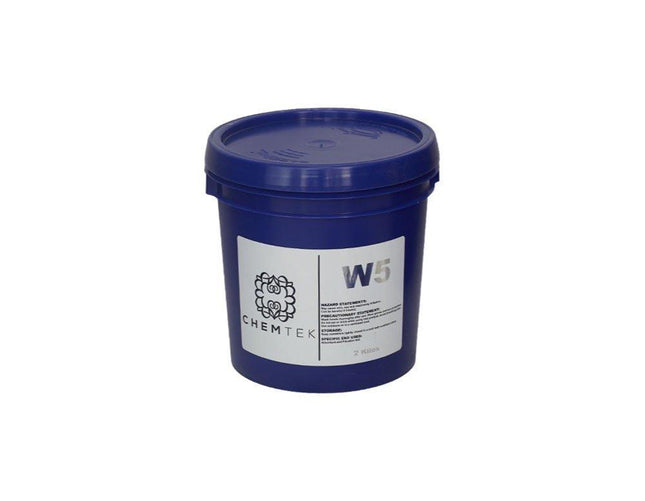
CHEMTEK W5 Neutral Bleaching Clay
CHEMTEK W5 Neutral Bleaching Clay W5 is a neutral bleaching clay specialized for the removal of heavy metals. While most sorbents will remove heavy metals, the acids involved in the activation process could cause desorption. By neutralizing the clay processors can take advantage of the increased surface area without any risk of desorption. W5 SDS W5 Technical Data Sheet
$65.00 - $250.00
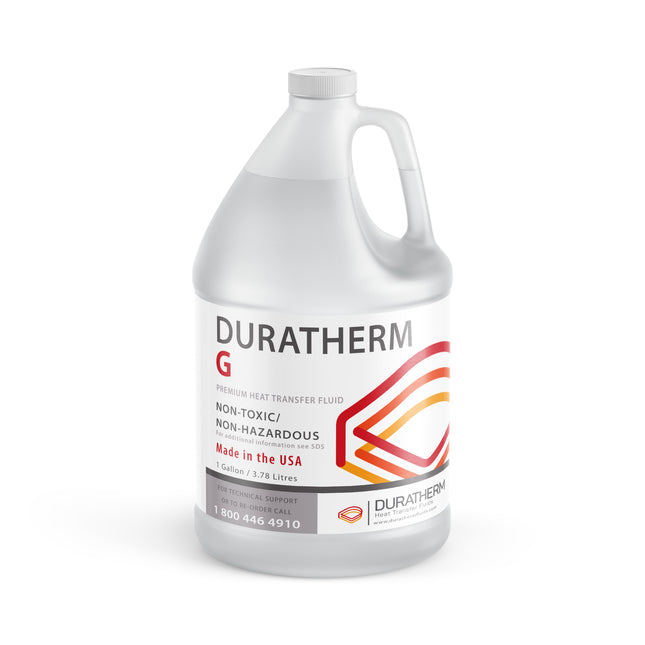
Duratherm G Thermal Fluid - High Temp Rated 260°C (500°F)
DURATHERM G Duratherm G is a glycol based thermal fluid rated to 260°C (500°F), a proprietary additive system that not only helps the fluid last longer and run cleaner, it makes it the ideal choice for extreme oxidation environments including demanding, open bath applications. 260°C (500°F) maximum operating temperature High flash point of 249°C (480°F) Ideal for use in extreme oxidation environments like open baths Polyalkylene glycol based thermal fluid with enhanced performance TEMPERATURE RATINGS Max Bulk/Use Temp 260°C Max Film Temp. 288°C Pour Point ASTM D97 -40°C SAFETY DATA Flash Point ASTM D92 249°C Fire Point ASTM D92 263°C Autoignition ASTM E-659-78 366°C THERMAL PROPERTIES Thermal Expansion Coefficient 0.0679 %/°C Thermal Conductivity W/m·K 38°C 0.182 100°C 0.175 204°C 0.165 204°C 0.164 260°C 0.159 Heat Capacity kJ/kg·K 38°C 1.976 100°C 2.043 204°C 2.153 204°C 2.152 260°C 2.211 PHYSICAL PROPERTIES Viscosity ASTM D445 cSt 40°C 42.16 100°C 7.43 204°C 1.88 204°C 1.87 260°C 1.23 Density ASTM D1298 kg/l 38°C 0.92 100°C 0.90 204°C 0.87 204°C 0.87 260°C 0.86 Vapor Pressure ASTM D2879 kPa 38°C 0.28 100°C 0.88 204°C 2.40 204°C 2.41 260°C 3.52 Distillation Range ASTM D2887 10% 368°C 90% 514°C Specific Gravity @ 16°C 0.963 Note: The values quoted in the table above are typical of normal production.They do not constitute a specificatio
$59.00 - $2,345.00
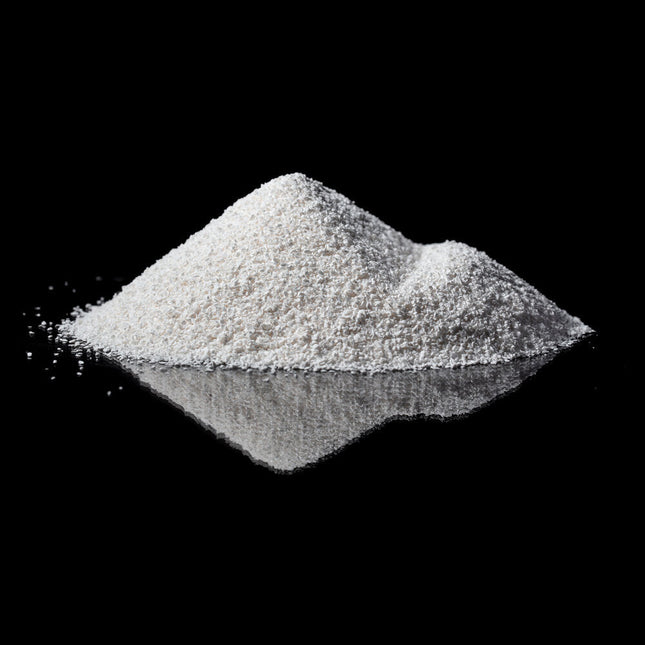
CHEMTEK Granular Activated Alumina
Granular activated alumina is neutral pH adsorbent used to remove moisture, free fatty acids, and phospholipids to speed up crystallization and to improve the end products’ oxidative stability.
$75.00 - $100.00
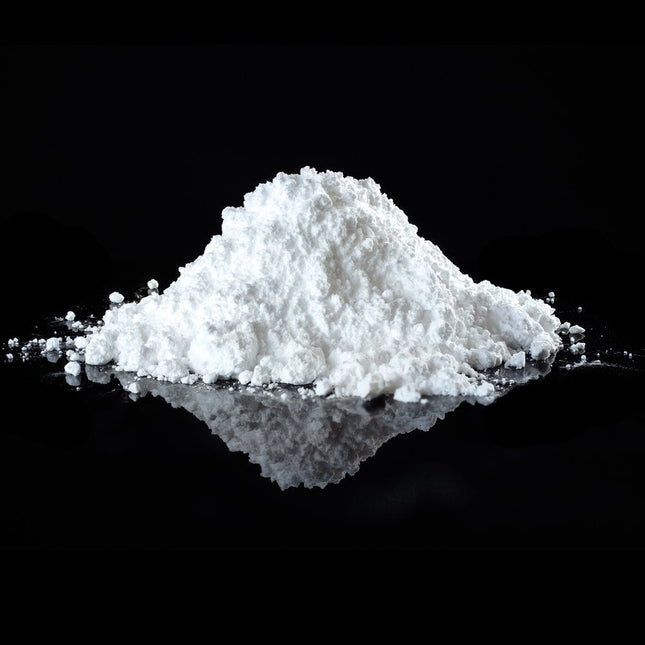
CHEMTEK D-Wax
D-Wax is a silica with high adsorption capacity and strong affinity for phospholipids, trace metals, and soaps. It contains 50% water and citric acid to remove both hydratable and non hydratable phosphatides. D-Wax SDS
$80.00 - $460.00
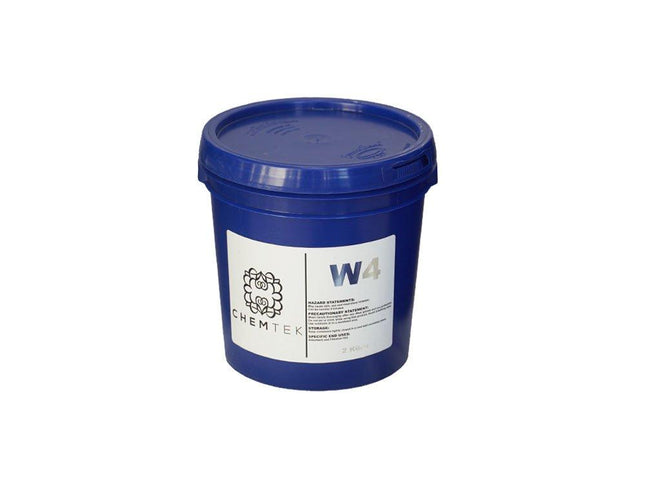
CHEMTEK W4 Pesticide Remdiation Bleaching Clay
CHEMTEK W4 Pesticide Remdiation Bleaching Clay W4 is an alkaline bleaching clay specialized for the removal of pesticides, chlorophyll, free fatty acids, and oxidized compounds. It removes pesticides through adsorption and hydrolysis. Pesticides undergo alkaline hydrolysis, in which a pH greater than 7 causes chemical degradation of certain pesticides in the presence of ions. W4 SDS W4 Technical Data Sheet
$65.00 - $3,250.00
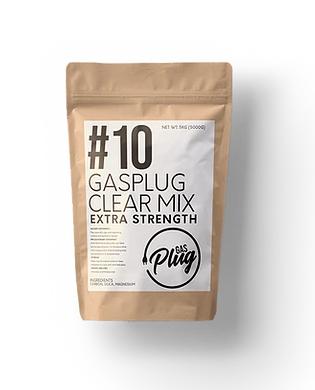
Gas Plug Clear Mix #10 Extra Strength
This Extra Strength GASPLUG Clear Mix is a special mixture of minerals that electromagnetically affixes themselves to plant compounds and pigment, removing the bad stuff from extracted oil, and purifying your oil. Gas Plug Clear Mix #10 Extra Strength SDS CONTAINS: CARBON, SILICA, MAGNESIUM. * DISCLAIMER * You should only lose yield from your oil in correspondence to the amount of residual plant compound removed. If you lose more than 20% yield from gold oil, you have done it wrong. It is not uncommon to have a 50-60% cannabinoid crude oil that loses 30-40% yield under refinement. The amount of yield loss should be proportionate to the overall potency.
$100.00 - $500.00
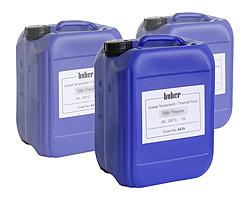
Huber MinOil P20.190.40, Heat transfer fluid 20 to 190 °C
Huber MinOil P20.190.40, Heat transfer fluid 20 to 190 °C P20.190.40 is a high quality mineral oil based heat transfer fluid. It meets the technical safety requirements and tests according to DIN 4754 as well as the recommendations of VDI 3033 (Construction, operation and maintenance of heat transfer systems). Advantages: very good oxidation stability high thermal stability good viscosity-temperature characteristics low tendency to coke extended oil change interval Safety Data Sheet Properties Working temperature °C 20°C…190°C Flash Point °C 190 Fire Point °C not Specified Viscosity mm2/s (kinematic at 25 °C) 40 Density g/cm3 0,86 Pour Point °C > 300 Ignition temperature °C > 300 Colour light yellow Thermal expansion coefficient 10-5/K not Specified Heat conductivity W/(m·K) at 25 °C 0,135 Material incompatibility Not Specified
$429.00 - $1,307.00
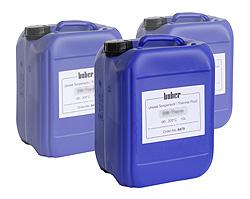
Huber DW-Therm HT P20.340.32 Heat transfer fluid 20 to 340 °C
Huber DW-Therm HT 20 to 340 °C Heat transfer fluid Huber heat transfer fluids are recommended for many temperature control applications because they have the best possible thermodynamic and environmental characteristics. Safe reliable operation relies on compliance with safety standards to ensure optimal results. DW-Therm HT is a mixture of partially hydrogenated naphthalenes. It is especially suited for high temperature applications using hydraulically sealed thermostats. Please note: Valid only for Unistats Safety Data sheet Advantage: broad working range from 20 °C up to 340 °C (hydraulically sealed systems) Long lifetime at high temperatures under inert atmosphere: 3 -4 years Good thermal properties for heat transfer High thermo-oxiation stability Properties Working temperature°C 20 to 340 Flash Point °C 190 Flash Point °C approx. 218 Viscosity mm2/s (kinematic at 25 °C) 32 Density g/cm3,(at 20 °C) 1,043 Pour Point °C -30 Ignition temperature °C 385 Colour orange, clear Thermal expansion coefficient 10-5/K not specified Heat conductivity W/(m·K) at 30 °C 0,130 Material incompatibility not specified
$790.00 - $1,365.00
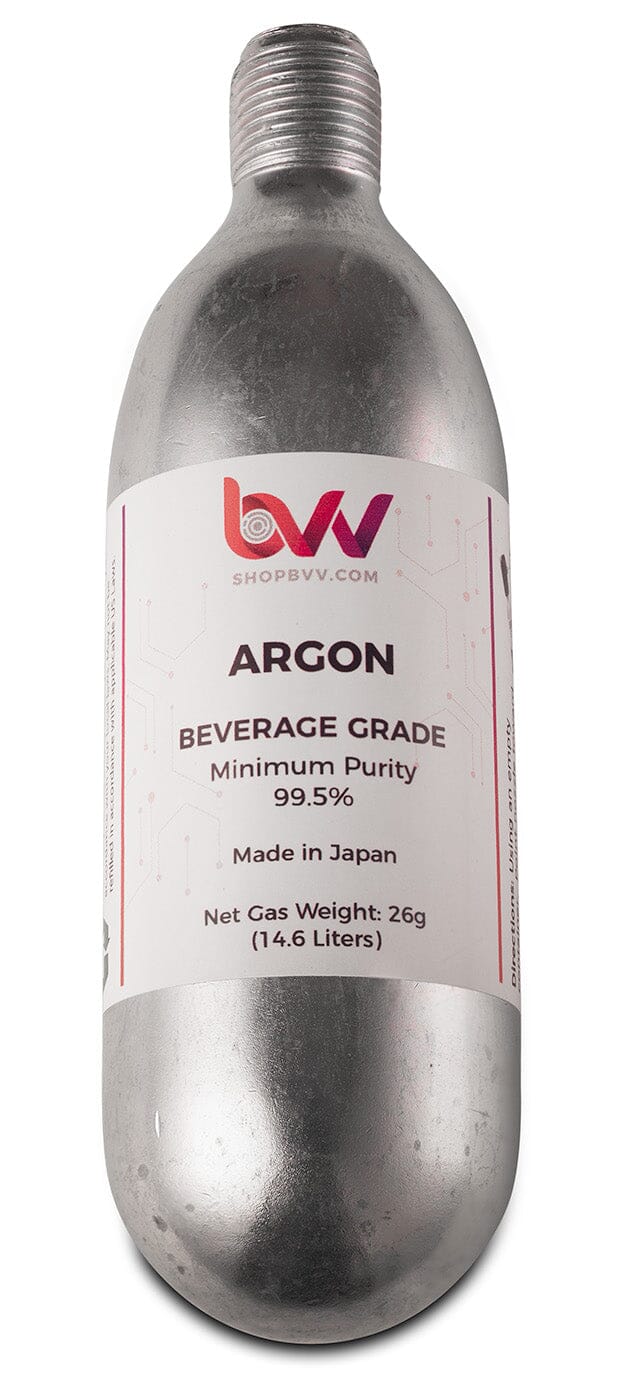
Argon Gas 99.5% - Pure gas for preserving terpenes in flowers and concentrates
Argon Gas Beverage Grade 99.5% Pure Made in Italy Our Pure Argon gas is for preserving terpenes and maximizing shelf life, for flowers and concentrates. The pure argon gas displaces air inside your storage containers, this eliminates oxygen, carbon dioxide and humidity to prevent oxidation of your terpenes and lengthens your shelf life. Directions: Using an empty container. Point nozzle toward the bottom of your container. Apply 2-seconds per every 4oz of container volume. Immediately fill container with desired material and securely close the lid. *Note Argon is heavier than air, Tank/Cartridge Pressure 1450 PSI Tank Volume of Argon Coverage Product Sku: 26g / 14.6 Liters / 3.8 Gallons ~6.3 lbs of flower ARGON-26G 185g / 103 Liters / 27 Gallons ~31.7 lbs of flower ARGON-130G Regulator Details 14.6 Liters/ with Duster Kit - Thumb touch control button w/ Lock, regulated to 40 PSI. Made in Japan. Thread: 5/8"-18 for use with the 26g Argon Cartridge. 3.5" long nozzle. 103 Liters/ with Regulator Kit - Adjustable via. needle valve, regulated to 80 PSI. Made in Italy. Thread: M11x1 (tank connection). Output: 1/4" Brass Barb, Includes 12" Tygon Tubing. Gauges read in BAR. *All single 130g argon tanks come with a plastic nozzle for general dispensing. If the regulator is beyond your budget you can attach a tube of your choice. Nozzle tip diameter 3/8" - Recommend choosing a 3/8" Inside Diameter tube or larger and cut to your desired length. What Is Argon? Argon is a chemical element with the symbol "Ar" and atomic number 18. It is a noble gas, which means it belongs to a group of inert and colorless gases that are chemically stable and relatively non-reactive under normal conditions. Argon is the third most abundant gas in the Earth's atmosphere, making up about 0.93% of the air we breathe. Despite its abundance, argon is mostly used in specialized industrial applications due to its inert and non-reactive properties. It is obtained as a byproduct of the production of liquid oxygen and liquid nitrogen through the fractional distillation of air. In its natural state, argon is odorless, tasteless, and colorless. What Is Argon Used For? Argon has a variety of practical and industrial uses due to its inert and non-reactive nature. Some of the key applications of argon include: Welding: Argon is commonly used as a shielding gas in welding processes, such as TIG (Tungsten Inert Gas) and MIG (Metal Inert Gas) welding. It helps prevent oxidation and ensures clean and strong welds. Laboratory Research: Argon is used as a carrier gas in gas chromatography and as an inert atmosphere in scientific laboratories to prevent reactions with sensitive materials. Electronics and Semiconductors: Argon is used in the production of semiconductors and other electronic components, providing a controlled environment for manufacturing processes. Preservation of Perishable Goods: In the food and beverage industry, argon is used to displace oxygen and extend the shelf life of perishable goods, such as wine, by preventing oxidation and spoilage. Medical Applications: Argon is employed in laser surgery and serves as a coolant for superconducting magnets in MRI (Magnetic Resonance Imaging) machines. Deep-Sea Diving: Argon-helium mixtures are used in deep-sea diving to reduce the effects of high pressure on the human body. Lighting: Although less common now, argon was used in incandescent light bulbs to prevent the filament from oxidizing. Metal Manufacturing: Argon is used in the production of metals like titanium and other reactive metals to create a controlled atmosphere. Heat Treating: In heat-treating processes, argon is used as a protective atmosphere to prevent oxidation and maintain the desired material properties. Window Insulation: Argon is sometimes used to fill the space between double or triple-pane windows to improve insulation and energy efficiency. Astronomy: Argon is used in some types of telescopes to create a stable and controlled environment for the detectors. These applications highlight the versatility of argon in various industries, where its inertness and non-reactivity play a crucial role in maintaining controlled and stable conditions for specific processes. How Does Argon Preserve Terpenes? Argon can be used to preserve terpenes through its inert and non-reactive properties. Terpenes are volatile organic compounds responsible for the aroma and flavor of various plants. When exposed to oxygen or other reactive gases, terpenes can degrade or oxidize, leading to a loss of their aromatic and flavor characteristics. By using argon as a protective gas, you can create an oxygen-free environment that prevents terpenes from coming into contact with reactive molecules. This helps to preserve the integrity of terpenes and maintain their original aroma and flavor profiles. When storing or handling terpene-rich products, such as essential oils or botanical extracts, introducing argon gas can help extend the shelf life and ensure that the product retains its desirable sensory attributes. Argon's inert nature means it does not chemically interact with the terpenes, preventing unwanted reactions that could lead to degradation. It forms a barrier between the terpenes and the surrounding air, effectively shielding them from oxygen and moisture, both of which can contribute to terpene degradation. Argon can be a valuable tool for terpene preservation during storage, Helping you preserve the unique terpene profiles of different strains making it crucial for maintaining product quality. How Does Argon Displace Oxygen? Argon displaces oxygen through a process called inert gas displacement or dilution. This occurs when argon, which is denser than air, is introduced into an enclosed space, pushing the lighter oxygen molecules upward and out of the area. As a result, the concentration of oxygen in the space decreases, creating an atmosphere that is less conducive to combustion and other chemical reactions. Here's how the displacement process works: Density Difference: Argon is significantly denser than air, which means it has a higher mass per unit volume. When argon is released into an enclosed space, it naturally sinks to the bottom, displacing the lighter gases like oxygen and nitrogen that make up the atmosphere. Mixing: As argon is introduced, it starts to mix with the existing air in the space. The heavier argon molecules tend to concentrate near the bottom, while the lighter oxygen molecules rise to the top. Oxygen Reduction: As argon continues to fill the space, the concentration of oxygen molecules decreases. Oxygen is gradually pushed upward and out of the area, leading to a lower oxygen content in the atmosphere. Inert Environment: The increasing presence of argon creates an inert environment where oxygen is less available to support oxidation. This is particularly useful in storing oxidizable compounds. It's important to note that while argon displaces oxygen, it does not chemically react with other gases or substances. Instead, it creates a physical barrier between oxygen and the materials that could ignite or react with it. This property makes argon a valuable tool in fire suppression systems, as well as in applications like food preservation, where a low-oxygen environment helps extend the shelf life of products. When working with argon, especially in confined spaces, proper safety measures should be followed to prevent oxygen depletion and ensure a safe working environment. How Do I Use Argon For Flower and Concentrate Storage? Using argon for flower and concentrate storage is a simple and effective method to help preserve the quality and freshness of your products. Follow these steps to properly use argon gas for storage: Prepare the Container: Start with a clean and empty container that is suitable for storing your flower or concentrate. Ensure that the container has a tight-fitting lid or cap to create a sealed environment. Position the Nozzle: Hold the argon gas canister with the nozzle pointing toward the bottom of the container. This helps ensure that the argon gas displaces any oxygen present in the container. Apply Argon Gas: Press the nozzle to release the argon gas into the container. The recommended dosage is approximately 2 seconds of spraying for every 4 ounces of container volume. This dosage helps create a protective layer of argon gas within the container. Fill the Container: Immediately after applying the argon gas, place your desired flower or concentrate into the container. The argon gas will create a blanket of protection over the material, minimizing its exposure to oxygen. Securely Close the Lid: Once the container is filled with the material, seal it tightly with the lid or cap. Make sure the container is properly closed to maintain the sealed environment. Store in a Cool, Dark Place: Store the sealed container in a cool, dark place to further protect the contents from light and heat. Proper storage conditions are essential for maintaining the quality and potency of your flower or concentrate. Using argon gas in this manner helps create an oxygen-free atmosphere within the container, reducing the risk of oxidation and degradation of your products. By minimizing oxygen exposure, you can extend the shelf life and preserve the flavors, aromas, and potency of your flower and concentrate. Remember to always follow safety precautions when handling argon gas, including proper ventilation and avoiding direct inhalation. Additionally, ensure that the argon gas canister is stored and used in accordance with manufacturer guidelines. How Can I Preserve Wine With Argon? Preserving wine with argon is a popular method to extend the shelf life of opened bottles and maintain the wine's freshness and flavor. Follow these steps to effectively use argon gas for wine preservation: Gather the Necessary Equipment: Argon gas canister with a preservation nozzle or wine preservation system An opened bottle of wine with a cork or closure Position the Nozzle: Insert the dispensing line or nozzel into the neck of the wine bottle. If using an argon gas canister with a preservation nozzle, insert the nozzle into the bottle's neck, ensuring a tight fit. If using a wine preservation system, follow the manufacturer's instructions for attaching the system to the bottle. Apply Argon Gas: Press the nozzle to release a short burst of argon gas into the bottle. The argon gas is heavier than air and will displace the oxygen present in the bottle, creating a protective layer on top of the wine. Recap or Recork: Immediately after applying the argon gas, recap the bottle with its original cork or closure. Make sure the closure is securely in place to maintain a seal. Store the Bottle: Store the wine bottle upright in a cool and dark place, away from direct sunlight and temperature fluctuations. Enjoy Over Time: When you're ready to enjoy the wine again, simply remove the closure and pour a glass. The argon gas layer will have helped protect the wine from oxidation, allowing you to savor the wine's original flavors and aromas. It's important to note that argon gas is denser than air, so it will naturally settle on top of the wine. This layer of argon forms a barrier between the wine and the oxygen, preventing oxidation and preserving the wine's quality. Using argon gas for wine preservation is a convenient and effective method to enjoy opened bottles of wine over an extended period. It's particularly useful for wines that are meant to be enjoyed gradually, as well as for special bottles that you want to savor over time without worrying about deterioration. Always follow the manufacturer's guidelines for using argon gas for wine preservation and handle the gas canister with care.
$14.95 - $128.95
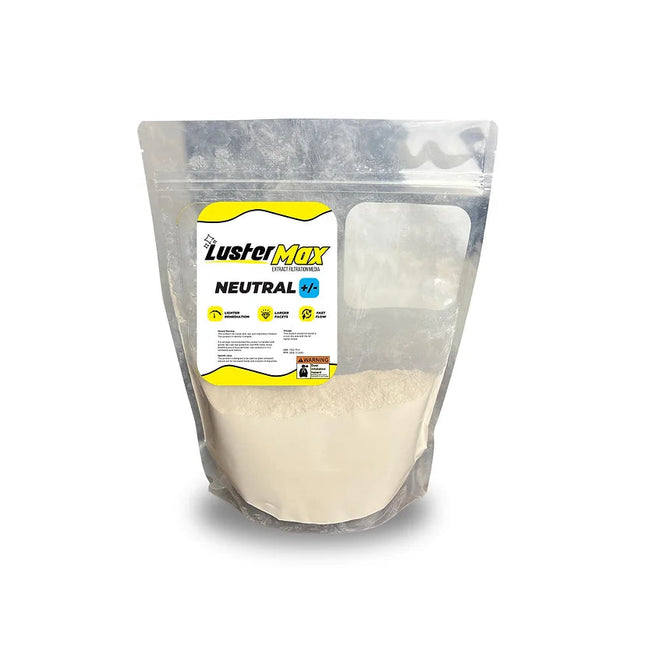
LusterMax NEUTRAL
LusterMax Neutral Neutral by LusterMax is an activated bentonite clay, finished at a neutral pH to allow for the amazing characteristics of our Alpha product, with an overall lighter remediation that is still magnitudes stronger than any neutral clay on the market. Developed by an experienced extraction technician, LusterMax's qualities stem from its attention to 4 variable characteristics that make up how well an adsorbent media works. ● Mineral Composition: What is the bentonite clay composed of. ● Particle Size Range: What are the particle sizes and how well do they let liquid flow through. ● Degree Of Activation: How much surface area is unlocked via activation ● Post Activation pH: What is the measured pH and how this affects crystallization speed. SDS File
$36.00 - $288.00
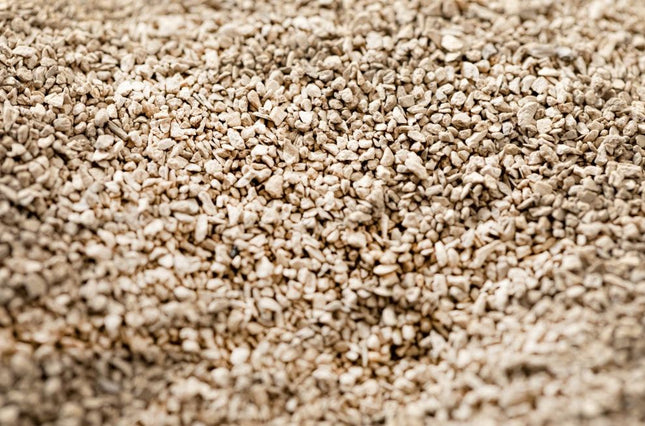
Media Bros CRY™ MEDIUM FLOW
CRY™ MEDIUM FLOW (CRY-M™) FILTER MEDIA FOR BHO EXTRACTION (NON-REACTIVE) CRY™ Medium Flow (CRY-M™) is a finer version of CRY™ designed for sysytems operating at slightly higher PSIs that still need high flow outputs and a little extra selectivity. It is not quite powder, but a much finer grain than CRY. The smaller granule size helps prevent channeling that can sometimes occur at higher PSIs. Unlike CRX-M™, it does require pre-baking (2-4 hrs. at 200+F), but it is already mixed for you. We recommend CRY-M™ for operators who want the same effect as CRY™ but are running at higher pressures or systems with size limitations. For extracts that require additional remediation beyond CRX-M™, CRY-M™ offers a superior polish, effectively addressing color, fats, and lipids. Opt for CRY-M when aiming for effortlessly reproducible results with older biomass. Suggested use: 150–250g per lb. of biomass Packaged in: 1.5 kg pouch, 5 gallon bucket, and 100 kg drum (note: images and video of media is the high flow version) Packaged in: 1.5 kg pouch, 5 gallon bucket, and 100 kg drum. TECHNICAL SPECS Solvent Type Hydrocarbon Color Remediation Level Moderately Heavy/High Pesticide Remediation Level Medium Selectivity/Polarity Level Moderately Selective/Medium Polarity Heavy Metal Remediation Yes Moisture Remediation Level Moderate Fats/Lipids/Waxes Level Medium Crystal Growth Fast Depth Filtration No Flow Rate Moderate Flow pH Level Neutral (pH 7) Best For Slightly Aged Biomass, Medium Quality Suitable for Reruns Yes Distillation Clean-up Moderate Scrub
$45.00 - $2,000.00
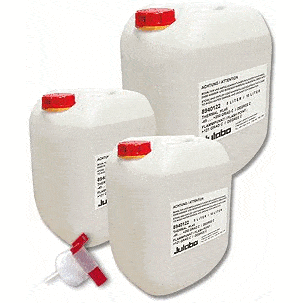
Julabo C5 Thermal Bath Fluid - 10 Liters
Julabo C5 Thermal Bath Fluid JULABO Thermal bath fluids are ideally suited for all of your temperature control applications and guarantee safe and reliable operation. Choosing the proper bath fluid is critical for best results in temperature control. Viscosity, oxidation characteristics and heat transfer of Thermal fluids are specifically matched with each JULABO temperature control unit. C5 Thermal Bath Fluid SDS C5 Thermal Bath Fluid Product Data Sheet JULABO Thermal bath fluids have been carefully selected and are optimized for maximum performance with JULABO instruments. Benefits Low toxicity Low viscosity High stability Minimum odor Good heat conductivity Low corrosion tendency Wide temperature ranges Technical Data Order no. 10 liters 8891402 Working temperature (°C) -60...+110 Flash point (°C) > +135 Fire point (°C) > +443 Viscosity (kinematic at 20 °C in mm²/s) 5 Density (at 20 °C in g/cm³) 0.918 Pour point (°C) -100 Boiling point (°C) >205 Ignition temperature (°C) 443 Color clear
$1,793.40
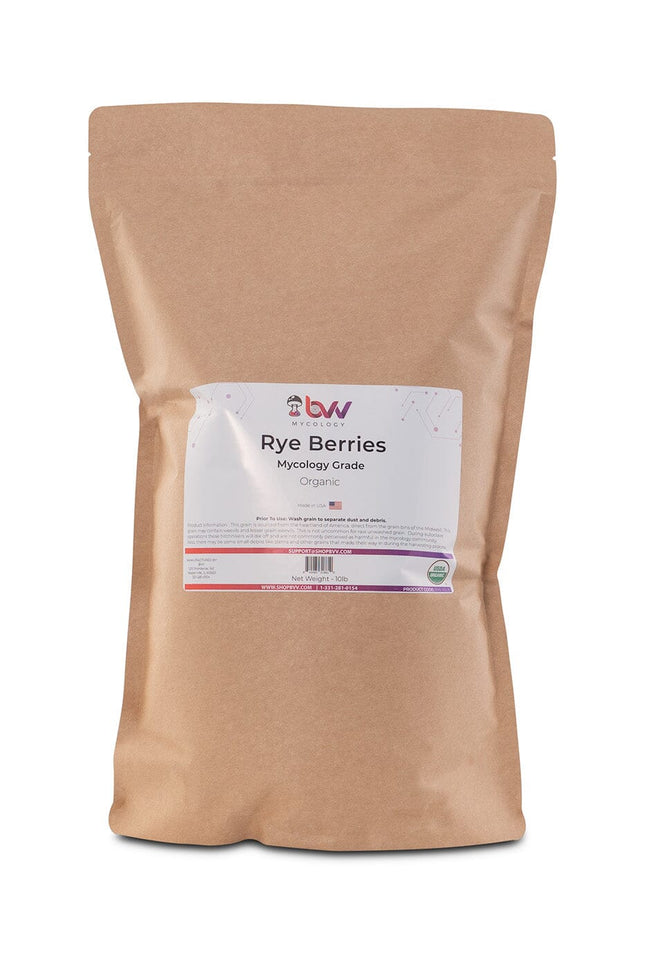
Rye Berries - Mycology Grade Organic Grain
Rye Berries Mycology Grade Organic Using Rye Berries for your grain offers some excellent advantages for your mushroom spawn. Rye berries have exceptional nutrient-rich composition. Rye berries contain high levels of carbohydrates, protein, and other essential nutrients that mushrooms need to grow and thrive. This means that you can expect robust and healthy mushroom growth when using rye berries as your spawn substrate. Rye berries are the most common and number one used substrate for grain spawn. Rye berries can be used to propagate mycelium for almost all species of mushrooms. Rye berries are also easy to sterilize and have good moisture retention. Prior To Use: Wash grain to separate dust and debris. Product Information : This grain is sourced from the heartland of America, direct from the grain bins of the Midwest. This grain may contain weevils and lesser grain weevils. This is not uncommon for raw unwashed grain. During autoclave operations these hitchhikers will die off and are not commonly perceived as harmful in the mycology community. There Also there may be some small debris like stems and other grains that made their way in during the harvesting process.
$13.50 - $1,290.00
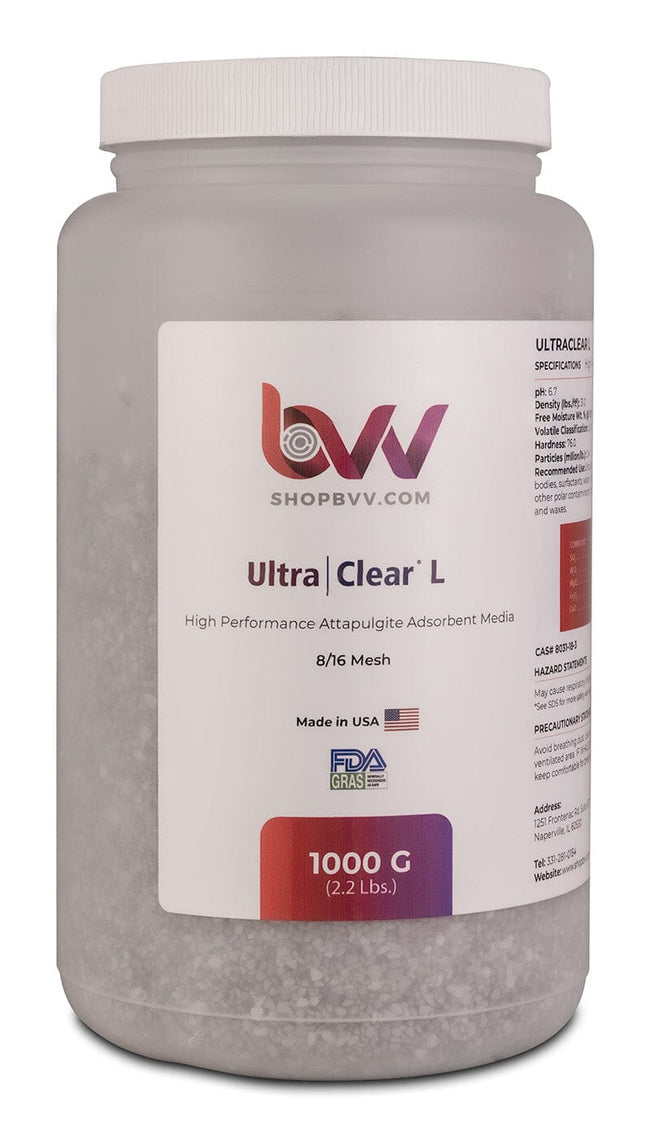
Ultra Clear L - Granular High Performance Bentonite for Bleaching & Decolorizing Edible Oils
Ultra:Clear® L 8/16 Mesh Made in USA, Food Grade Certified Ultra-Clear® L effectively removes color bodies, surfactants, water, free fatty acids, organic oxides, and other polar contaminants from a wide range of oils, liquids, and waxes. It is the Largest particle size in the Ultra-Clear product line. UltraClear® L is a unique, naturally occurring attapulgite that has been thermally processed to provide hard, durable granules that won’t swell or breakdown in the presence of water. All Ultra-Clear products are classified as processing aids andhave Generally Recognized As Safe (GRAS) status from theFood and Drug Administration (FDA). At BVV™ we recommend 200g per lb. of biomass. We also use this media with layering techniques & can be used with BVV™ Silica Gel and BVV™ Neutral Activated Alumina for a sugar in the oven finish! Ultra-Clear® is manufactured in 4 granule sizes, 8/16, 16/30, 30/60 & 60/90 mesh sizes. See the technical data sheet for more information from the manufacturer. Ultra:Clear® L Food Grade Certificate Ultra:Clear® L Technical Data Sheet Ultra:Clear® L Safety Data Sheet
$13.00 - $2,100.00
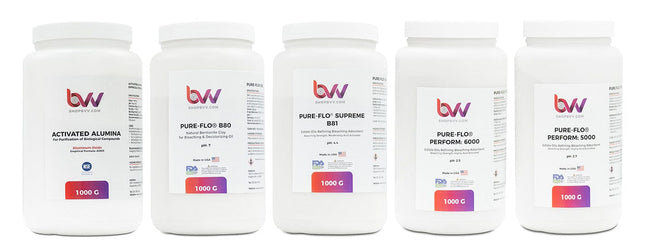
BVV™ 1KG Filtration Powder Bundle
BVV™ 1KG Filtration Powder Bundle This is a 1KG bundle created with 5 of the filtration aids BVV™ offers for refining and post-processing of material making a clear and cleaner end product. What's Included in the Bundle? BVV™ Activated Alumina - Activated Alumina also known as aluminum oxide is one of the most adaptable sorbents for preparative flash and column chromatography. Pure-Flo® B80 Natural Bentonite for Bleaching & Decolorizing Edible Oils *FDA-GRAS - Natural Bentonite Clay B80 uses the clay's inherent properties to remove impurities in oil without the use of chemical additives. Because these products are naturally active there is no danger of mineral acid carryover in finished oils. The natural properties of B80 can result in a significant reduction in red color. Pure-Flo® B81 Supreme Activated Bleaching & Decolorizing Bentonite for Edible Oils *FDA-GRAS - Pure-Flo® B81 Supreme Offers fats and oils processors surface modified performance at the best value. Excellent for oils with moderate color and chlorophyll levels. Supreme B81 adsorbent has been activated using a proprietary Surface Modification Technology (SMT). Pure-Flo® Perform 5000 Highly Acid Activated Bleaching & Decolorizing Bentonite for Edible Oils *FDA-GRAS - Pure-Flo® Perform 5000 provides superior bleaching activity for demanding oils. Effective with all types of difficult-to-bleach oil. Pure-Flo® Perform 6000 Highly Activated Bleaching & Decolorizing Bentonite for Edible Oils *FDA-GRAS - Pure-Flo® Perform 6000 is a highly activated bentonite clay that is used to purify extremely difficult to bleach oils with the most challenging levels of chlorophyll and color bodies.
$150.00
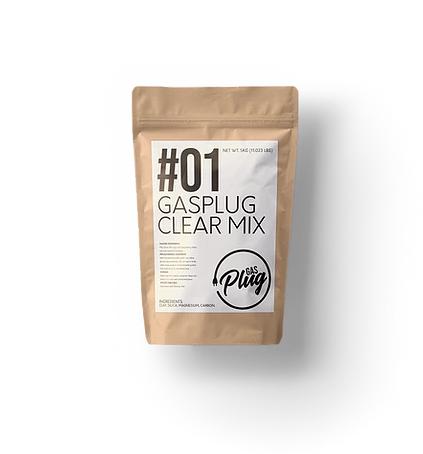
Gas Plug Clear Mix #01
A mixture of minerals that electromagnetically affixes themselves to plant compounds and pigment, removing the bad stuff from extracted oil, and purifying your oil Gas Plug Clear Mix #01 SDS CONTAINS: CLAY, SILICA, MAGNESIUM, CARBON. * DISCLAIMER * You should only lose yield from your oil in correspondence to the amount of residual plant compound removed. If you lose more than 20% yield from gold oil, you have done it wrong. It is not uncommon to have a 50-60% cannabinoid crude oil that loses 30-40% yield under refinement. The amount of yield loss should be proportionate to the overall potency.
$80.00 - $400.00
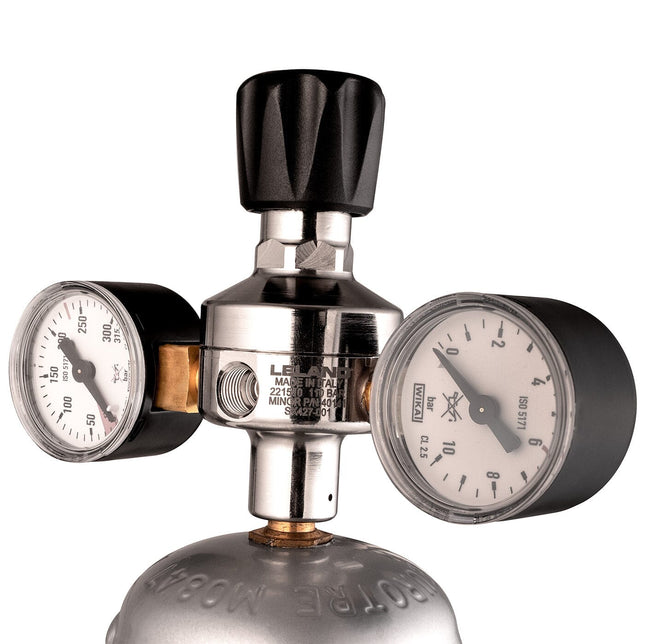
M11x1.0 Regulator for Compressed Gas
Compressed Gas Regulators Thread Size M11x1.0 All Made in Italy or Japan Our regulators are threaded and designed to fit our compressed gas tanks. Nitrogen, Argon, and Best Whip Nitrous Oxide cylinders. These are very high quality regulators, these are typically sold aerospace companies. You will be more than impressed with the quality and durability of these regulators. You definitely get what you pay for with these! *All regulators in this listing do not come with hoses, or cylinders. What is being sold is the regulator only. Regulators gauges read in BAR, not PSI Regulator Variant Product SKU Output Fitting Fits Regulates To Bare Regulator M11x1-CR 1/8 BSPT Female N/A 80psi Argon Regulator ARGON-130G-R 1/4" Hose Barb Any 1/4" ID Tubing 80psi Argon Duster DUSTER-5/8-DK 3" Straw N/A 5psi Nitrogen Regulator NITROGEN-130G-R 1/4" JIC Any 1/4" JIC Hose 80psi
$75.00
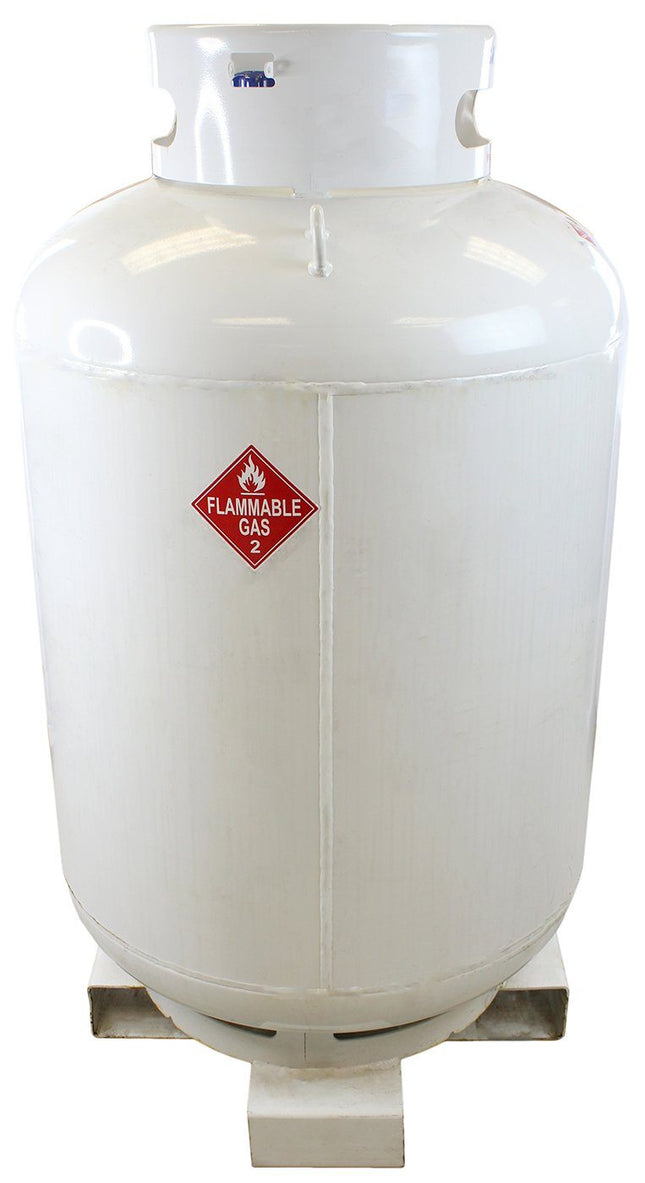
Half Ton - High Purity USA Propane - 99.5% Guaranteed
Half Ton High Purity USA PROPANE - 99.5% Guaranteed DISCLAIMER(S): This unit is intended for LEGAL purposes only, to be used in accordance with local laws and ordinances. Use only in WELL VENTILATED AREAS! Notice: This item will ship via Freight ONLY. This tank requires a CGA 510 fitting - Sold Separately BVV™ always recommends distillation of every solvent before use. *Actual liquid weight is 420LB California now prohibits the retail sale of any Non-Odorized butane in quantities larger than 150ml. If you are not a retail purchaser you can call in to place an order. Permitted Sales Include the Following: Medical Collectives or Cooperatives operating under CA Health & Safety Code Section 11362.775 Persons licensed to perform volatile solvent extraction activity under CA Bus & Prof Code Division 10 Manufacturers, wholesalers, resellers, or retailers solely for the purpose of resale High purity Propane is USA sourced, and guaranteed to be 99.5% pure. This instrument grade solvent helps to produce a higher quality extract by reducing mystery oils and contaminants. Solvent comes in a DOT refillable LP tank with liquid withdrawal valve (Diptube). Lot Analysis: Propane: 99.5% + Methane: <1ppm Ethane: 3ppm Isobutane: 2380ppm n-Butane: 251ppm Propylene: <5ppm Isopentane: <1ppm Water: <3ppm Sulfer: <1ppm *Free of any hydrogen Sulphide based Ethyl Mercaptan Odorants. *This product is clean, colorless and odorless. *Actual Propane liquid weight is 420LB Due to FAA regulations, solvent tanks cannot be safely transported via means other than ground. Any order that has solvent will not be shipped in an expedited fashion. If an order with solvent is combined with any other items and chosen to be expedited, that entire order will ship via UPS Ground/Freight. We will not split up any orders and ship them separately. If a customer is wanting to expedite specific items and order solvent, 2 separate orders (1 for the solvent and 1 for the expedited items) will need to be placed in order to do so. Solvents do not ship to Hawaii, Puerto Rico, or any other US Territory outside of the contiguous 48 States. Shipping Solvent to Alaska may ONLY ship via freight and will be required to travel through Canada. We have this policy in place to ensure safety when transporting solvents, and to prevent any issue with shipping times for our customers.
$2,800.00
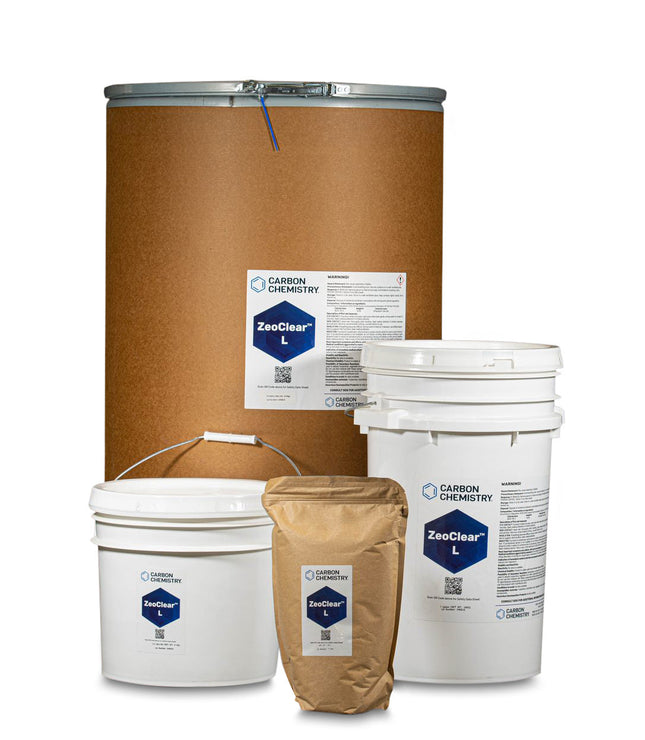
Carbon Chemistry ZeoClear™ L
Carbon Chemistry ZeoClear™ L Ideal for general product improvement, ZeoClear™ L is a highly effective media for color remediation and contaminant adsorption. It is commonly used for in-line color remediation from non-polar hydrocarbon solutions such as extracts in butane or propane. ZeoClear™ L can be used alone or tuned for less aggressive adsorption by combining with ZeoClear™ Y. ZeoClear™ L is a durable, naturally occurring granular attapulgite that has been thermally activated at high temperature to increase the porous surface area of its granules. This calcined magnesium aluminum silicate is a clay medium with an approximate grain size of 0.25mm and a neutral pH of 6.7. Download SDS
$35.00 - $6,300.00
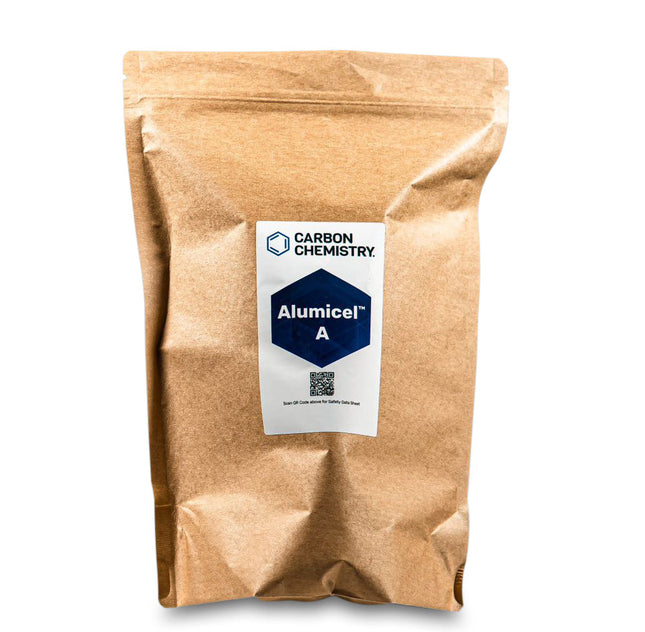
Carbon Chemistry Alumicel™ A
Carbon Chemistry Alumicel™ A Alumicel™ A Acidic; pH 4.7 Used for Chromatography Commonly used as an aid for decolorizing
$200.00 - $960.00
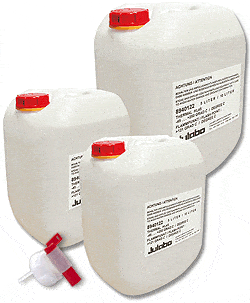
Julabo Thermal C10
Julabo Thermal C10 JULABO Thermal bath fluids are ideally suited for all of your temperature control applications and guarantee safe and reliable operation. Choosing the proper bath fluid is critical for the best temperature control results. Viscosity, oxidation characteristics and heat transfer of Thermal fluids are matched specifically with each JULABO temperature control unit. JULABO Thermal bath fluids have been carefully selected and optimized for maximum performance with JULABO instruments. Thermal C10 is a clear 10 cSt silicone fluid rated for use in open bath JULABO units with a working temperature range of -20…+160 °C. Care should be taken to observe atmospheric moisture condensation in the bath fluid with prolonged sub-ambient operation in humid environments. Water and silicone fluids are not miscible. Operation at the maximum temperature for heating applications will result in vapor formation. Vapor formation at elevated temperatures is a normal occurrence for silicone fluids. The upper temperature limit of the fluid is lower than the fluid flashpoint.
$1,354.36 - $2,690.10
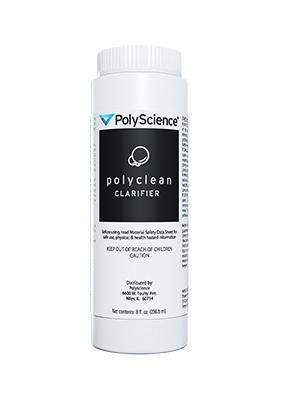
PolyScience polyclean CLARIFIER - 8 oz
PolyScience polyclean CLARIFIER - 8 oz Description Keeps reservoirs clean and odor-free. Concentrated: 8 oz (237 ml) treats approximately 200 gallons (757 liters). Quantity: 8oz (237 ml) Temperature Range: n/a Part Number: 004-300040 Safety Data Sheet (SDS) For use with: Circulating Baths Refrigerated Circulating Baths Heating Circulating Baths Stainless Steel Open Bath Systems Polycarbonate Open Bath Systems Viscosity Bath Calibration Bath 75L Refrigerated Circulating Bath Coliform Bath General Purpose Water Baths LM Series Benchtop LS Series Benchtop MM Series Benchtop 6000 Series Chiller 3370 Liquid-to-Air Cooler 4100 Liquid-to-Liquid Cooler
$65.00$49.00
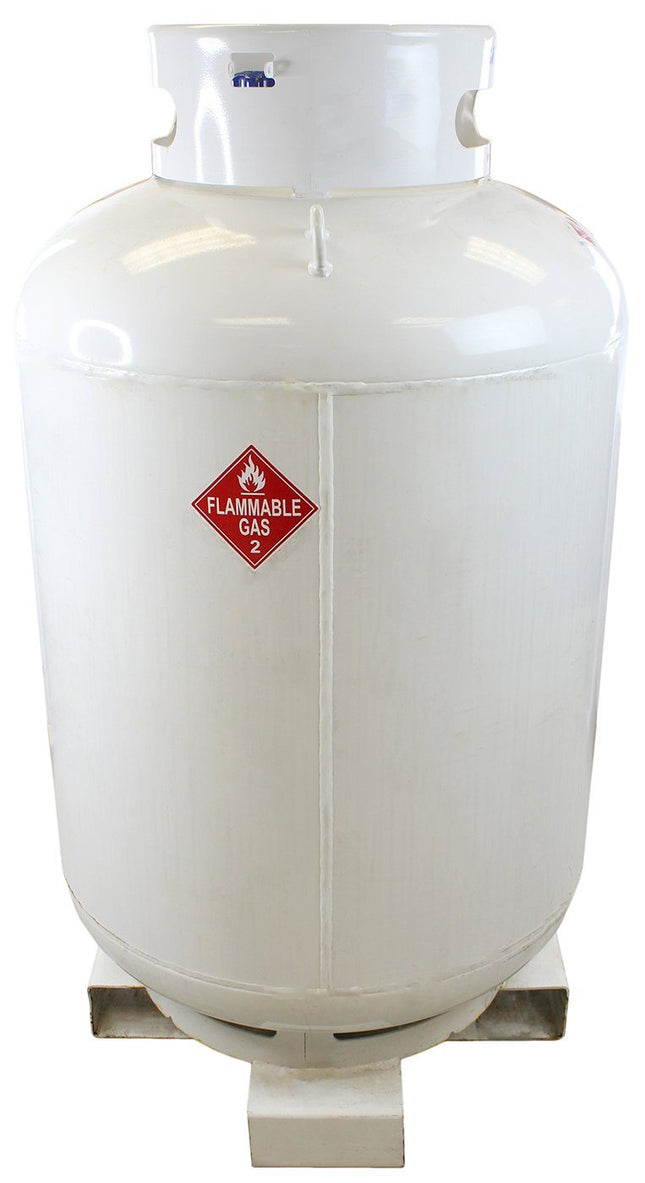
Half Ton - High Purity USA 50/25/25% N-Butane/Iso-Butane/Propane TRI-Blend - 99.5% Guaranteed
Half Ton - High Purity USA 50/25/25% N-Butane/Iso-Butane/Propane TRI-Blend - 99.5% Guaranteed DISCLAIMER(S): This unit is intended for LEGAL purposes only, to be used in accordance with local laws and ordinances. Use only in WELL VENTILATED AREAS! Notice: This item will ship via Freight ONLY. This tank requires a CGA 510 fitting - Sold Separately BVV™ always recommends distillation of every solvent before use. *Actual liquid weight is 482LB California now prohibits the retail sale of any Non-Odorized butane in quantities larger than 150ml. If you are not a retail purchaser you can call in to place an order. Permitted Sales Include the Following: Medical Collectives or Cooperatives operating under CA Health & Safety Code Section 11362.775 Persons licensed to perform volatile solvent extraction activity under CA Bus & Prof Code Division 10 Manufacturers, wholesalers, resellers, or retailers solely for the purpose of resale High purity 50/25/25% N-Butane/Iso-Butane/Propane TRI-Blend is USA sourced, and guaranteed to be 99.5% pure. This instrument grade solvent helps to produce a higher quality extract by reducing mystery oils and contaminants. Solvent comes in a DOT refillable LP tank with liquid withdrawal valve (Diptube). This product is clean, colorless and odorless. *Actual liquid weight is 482LB BVV™ Tri-Blend SDS Due to FAA regulations, solvent tanks cannot be safely transported via means other than ground. Any order that has solvent will not be shipped in an expedited fashion. If an order with solvent is combined with any other items and chosen to be expedited, that entire order will ship via UPS Ground/Freight. We will not split up any orders and ship them separately. If a customer is wanting to expedite specific items and order solvent, 2 separate orders (1 for the solvent and 1 for the expedited items) will need to be placed in order to do so. Solvents do not ship to Hawaii, Puerto Rico, or any other US Territory outside of the contiguous 48 States. Shipping Solvent to Alaska may ONLY ship via freight and will be required to travel through Canada. We have this policy in place to ensure safety when transporting solvents, and to prevent any issue with shipping times for our customers.
$2,940.00
You have seen 144 out of 180 products

